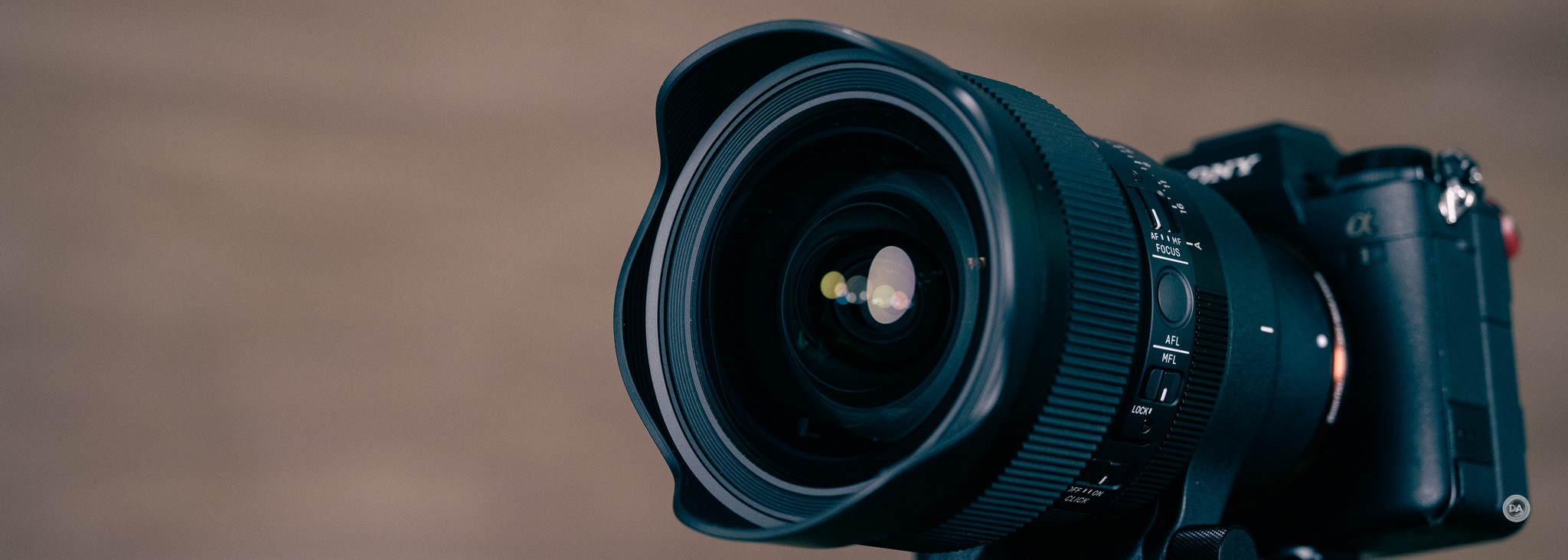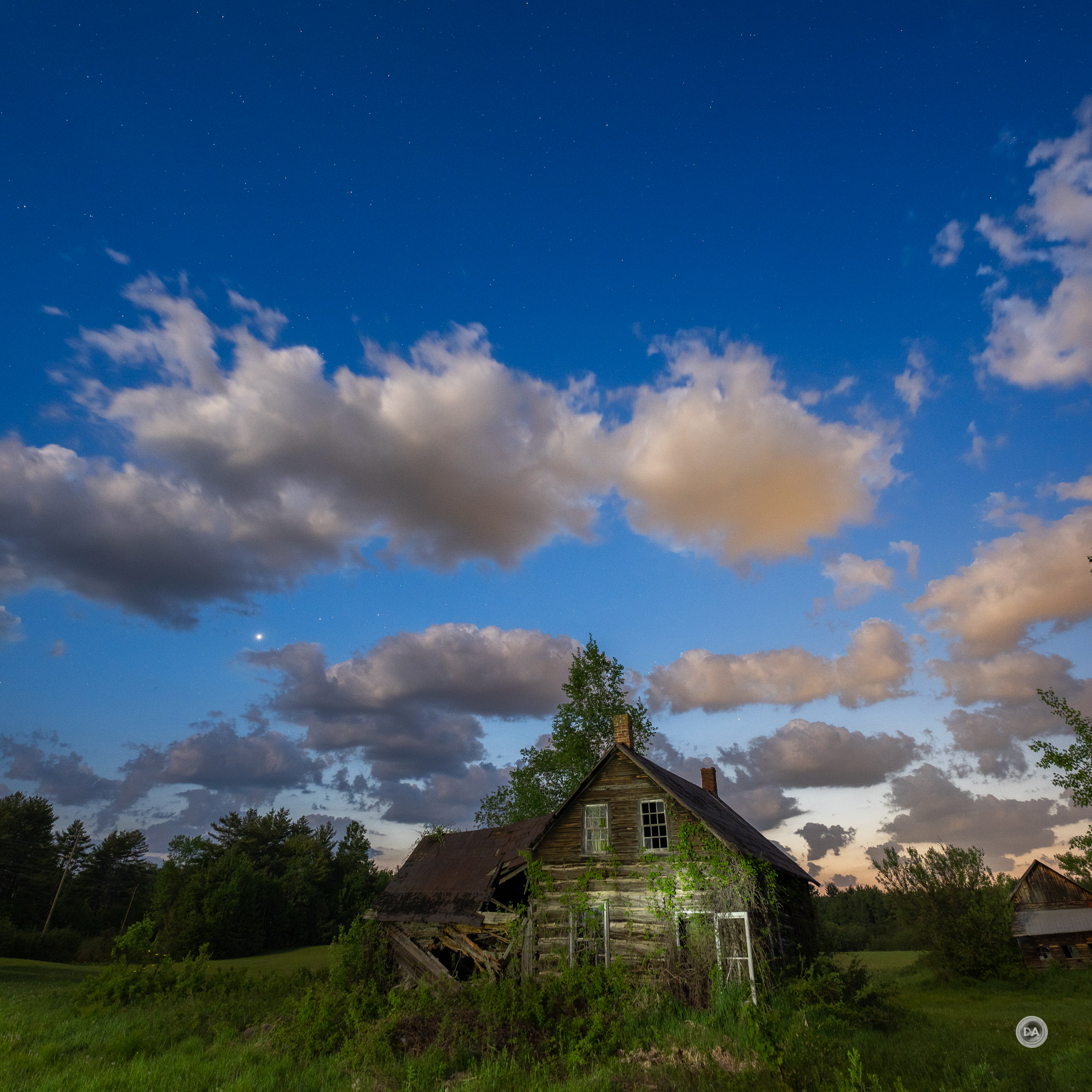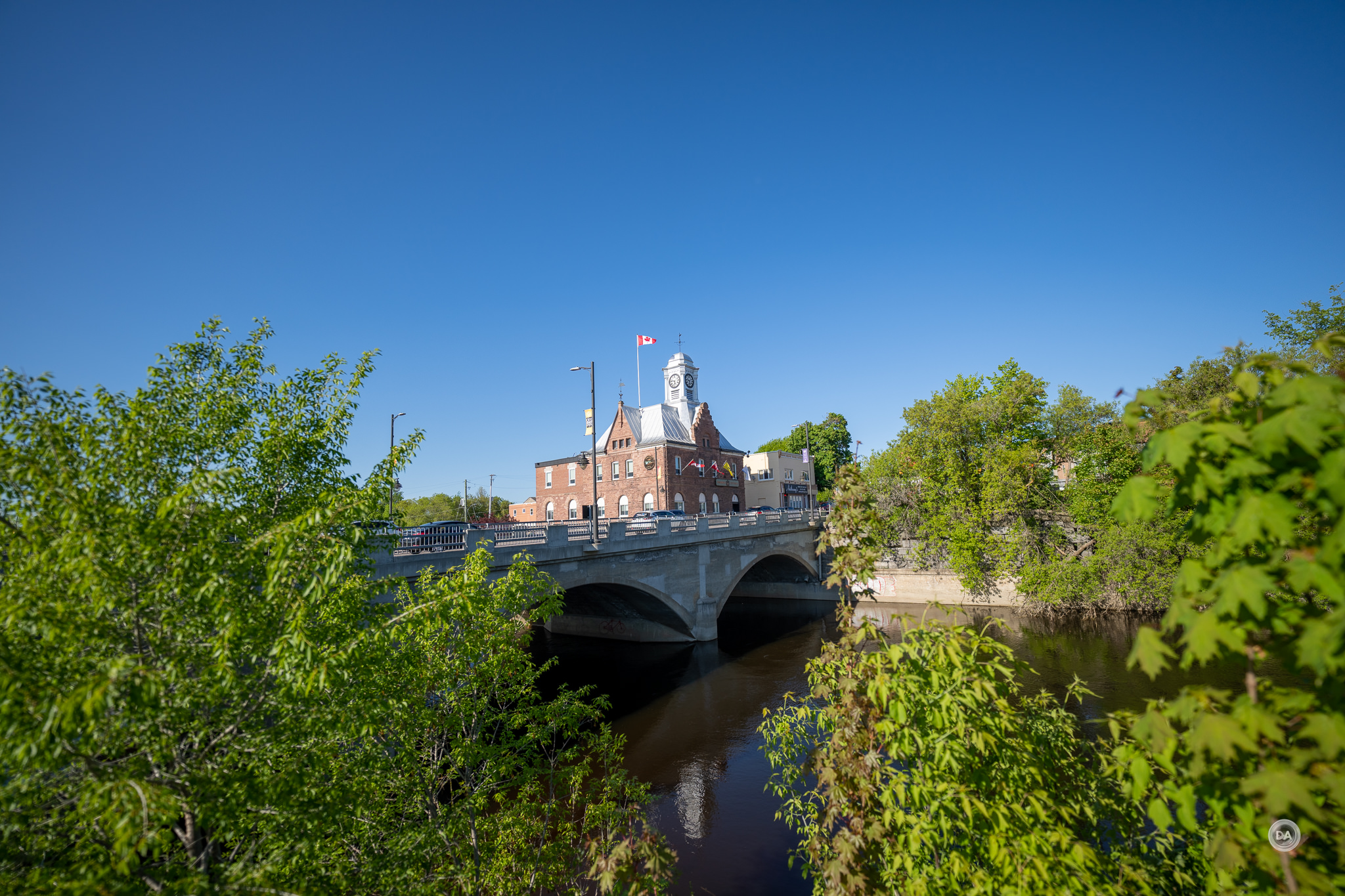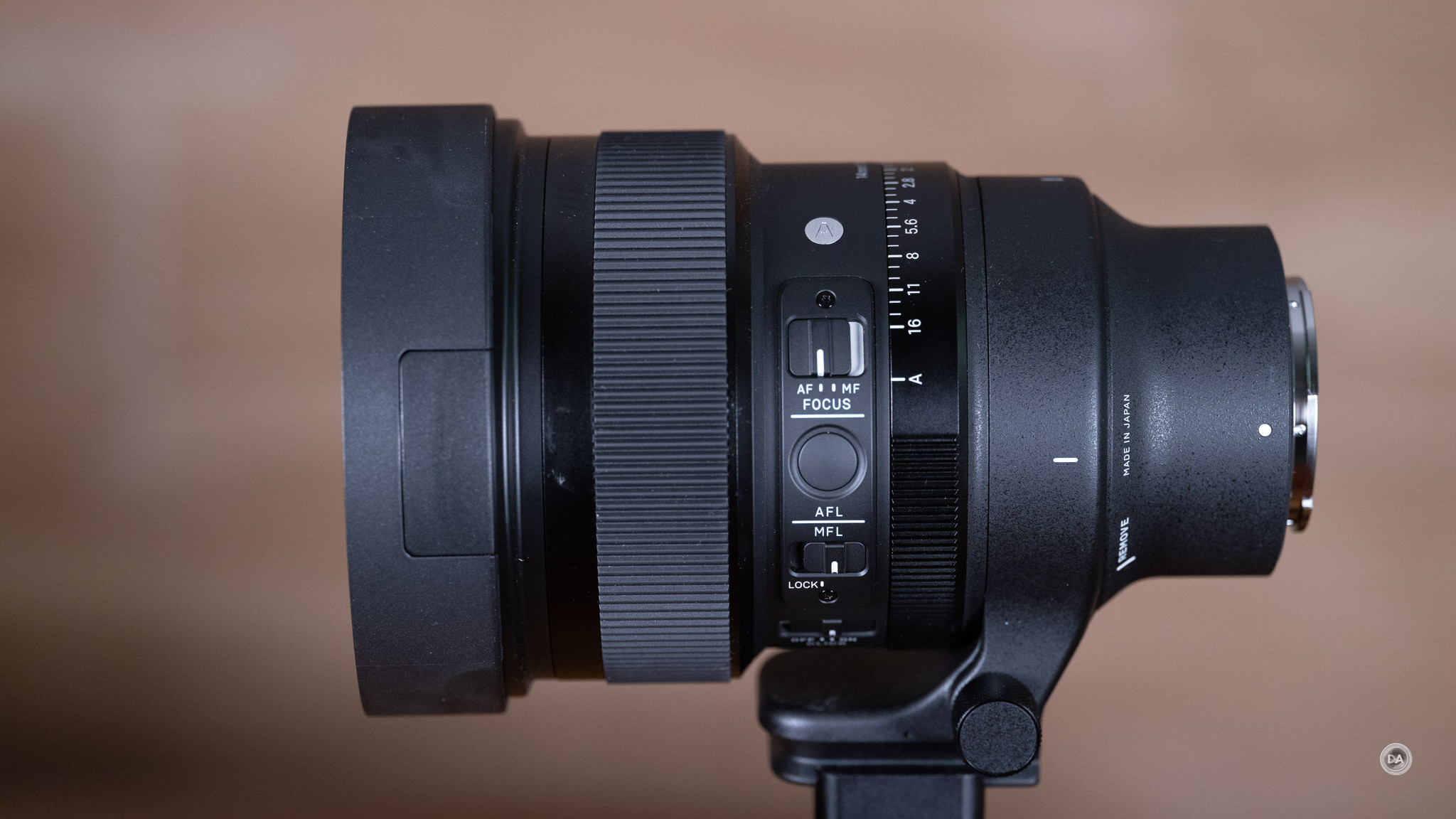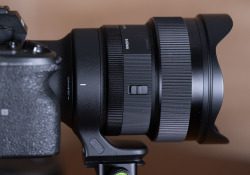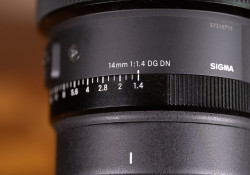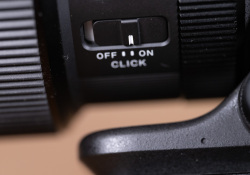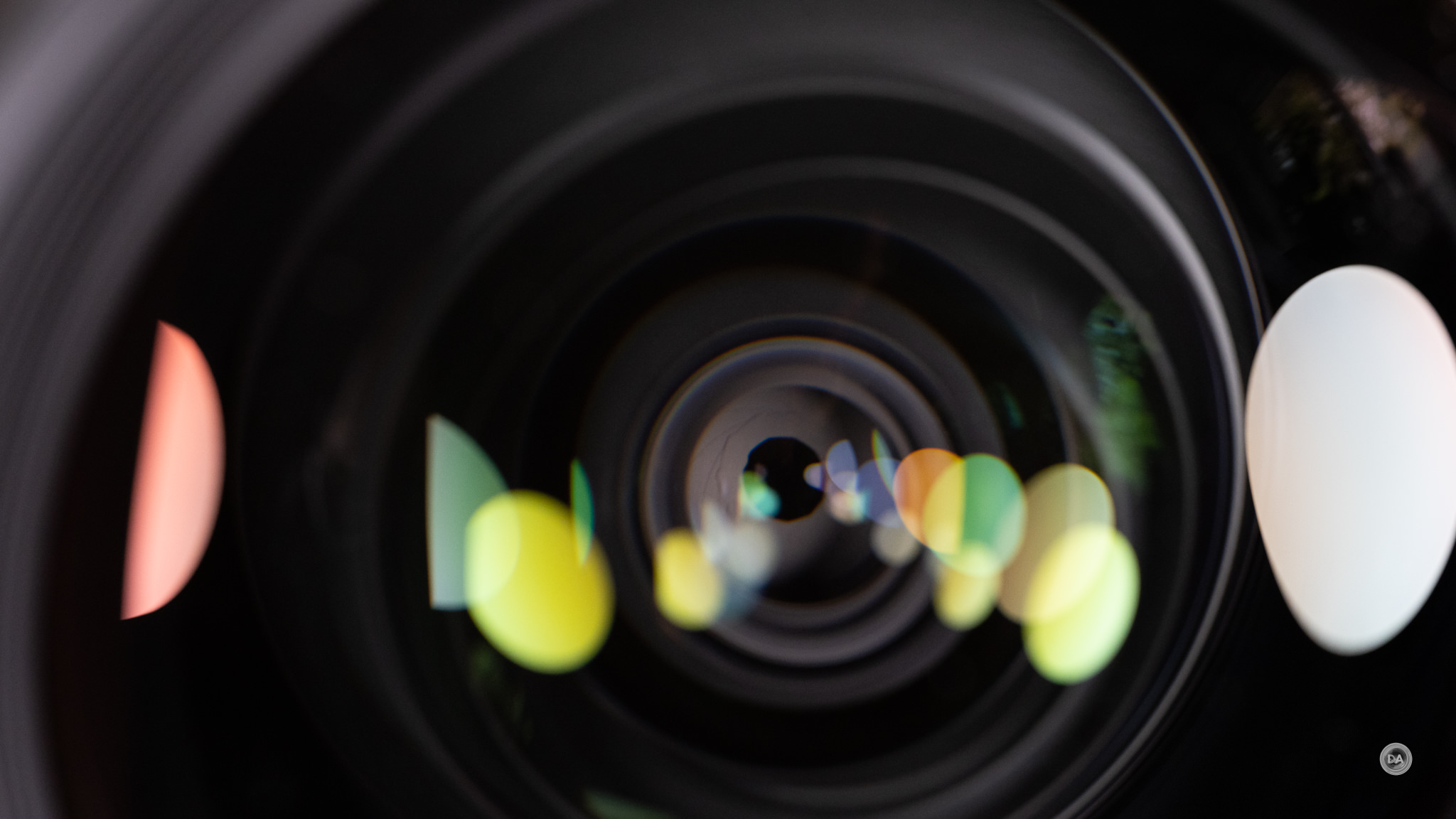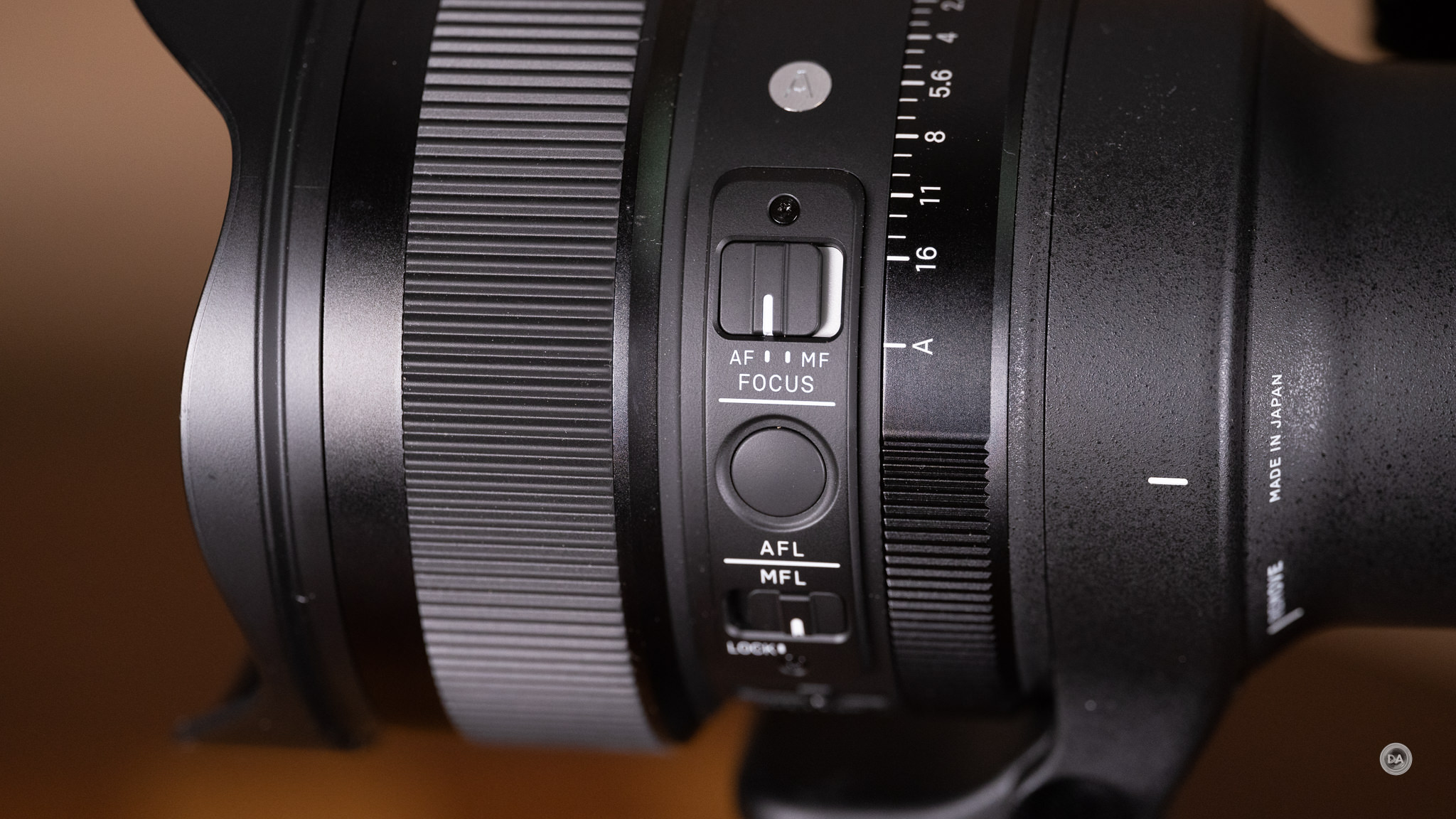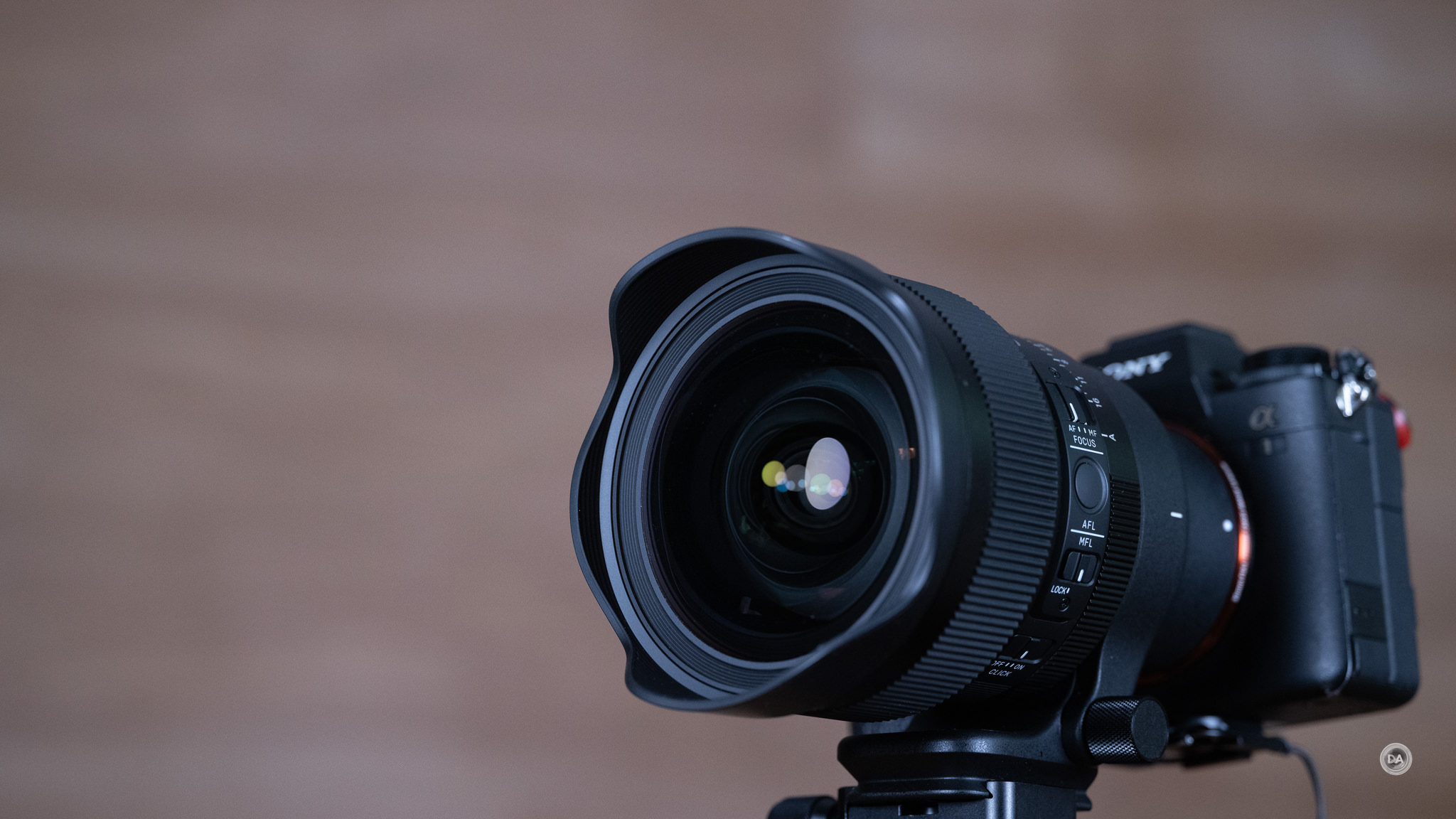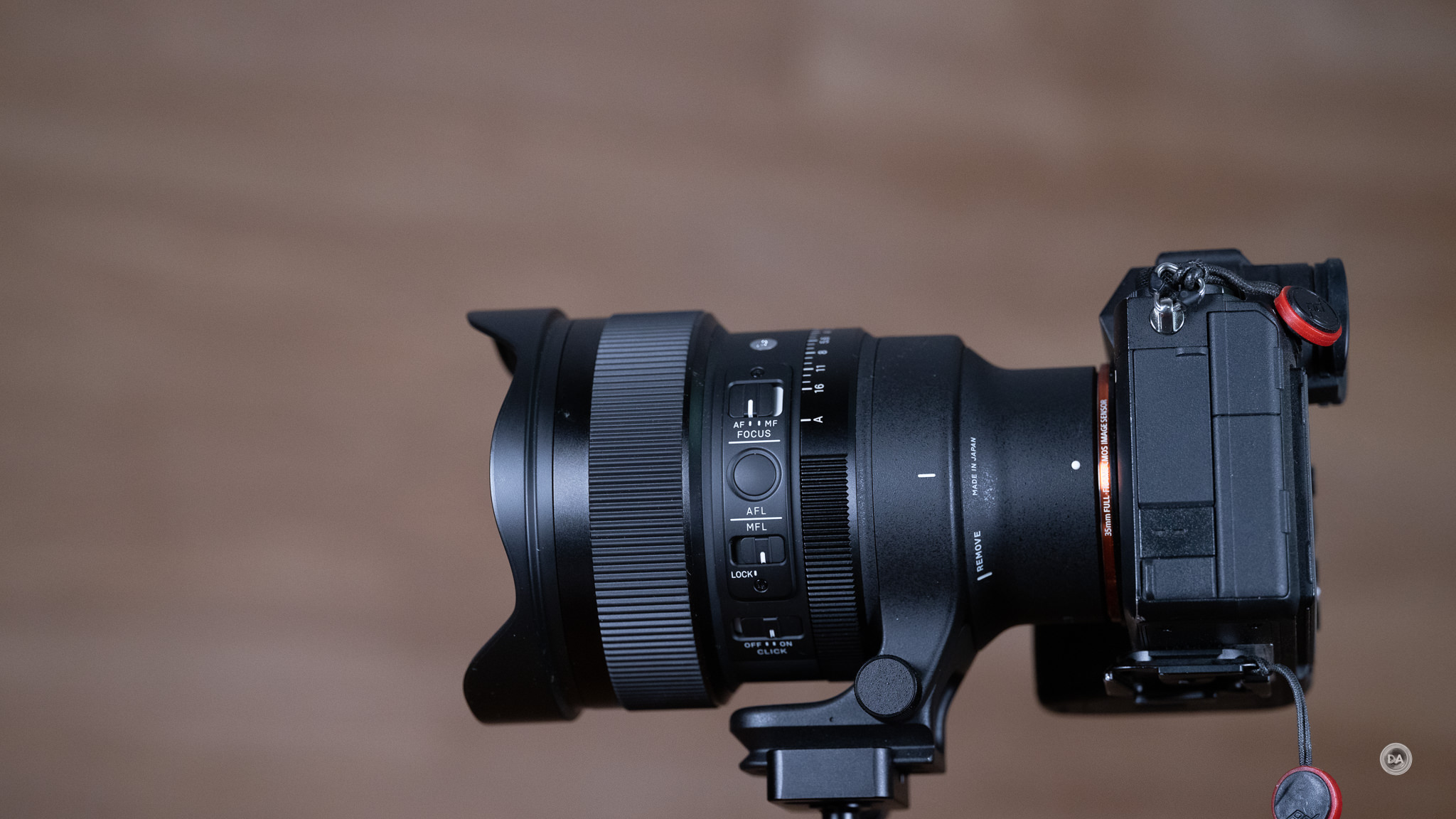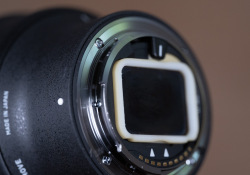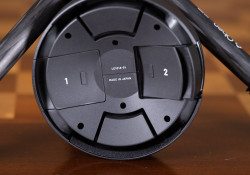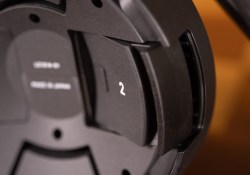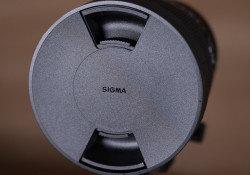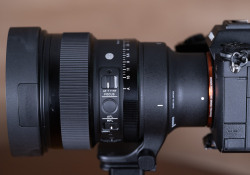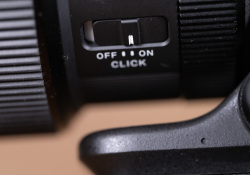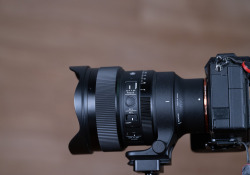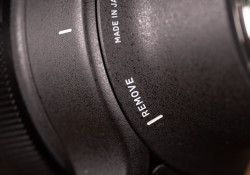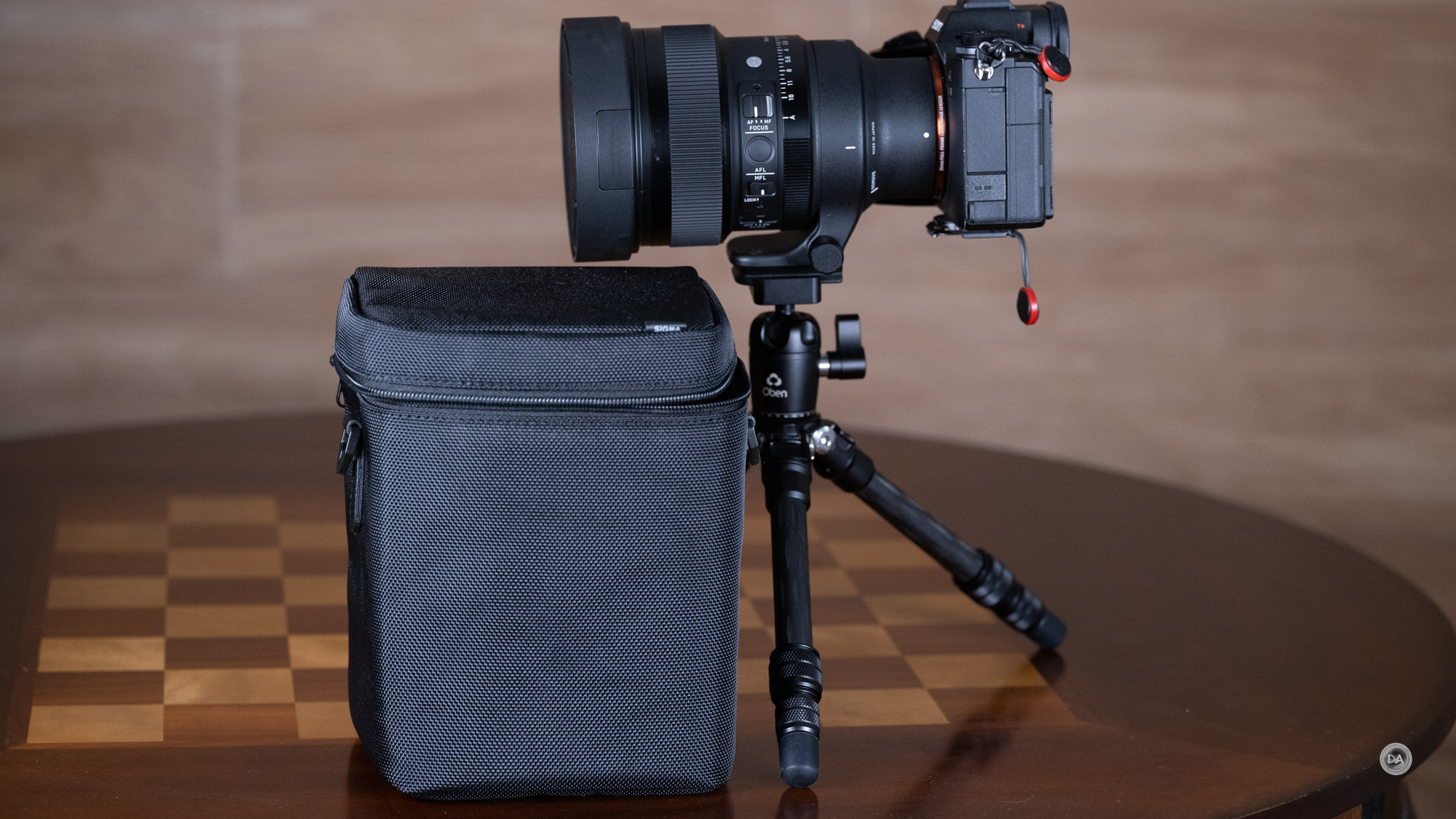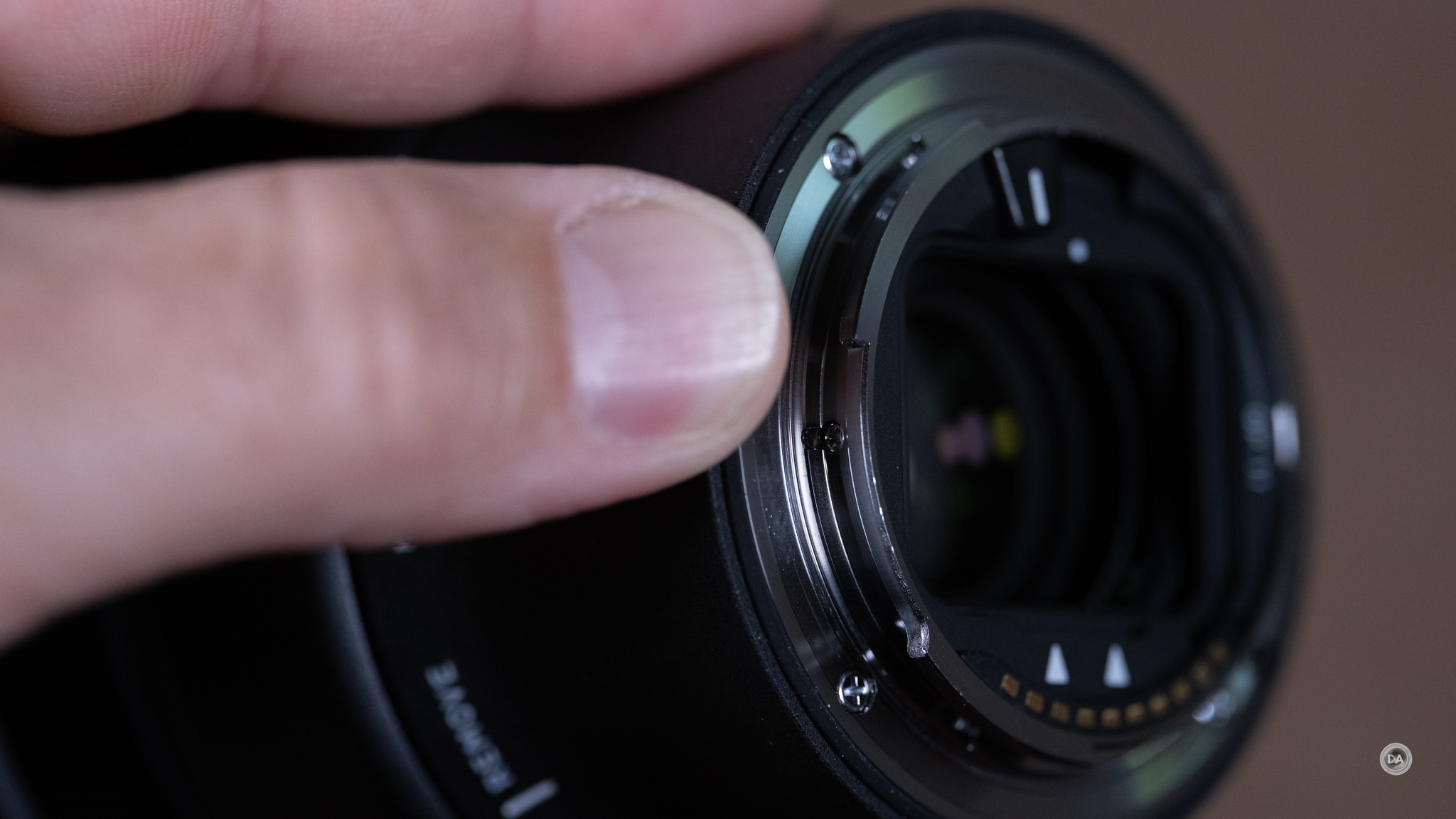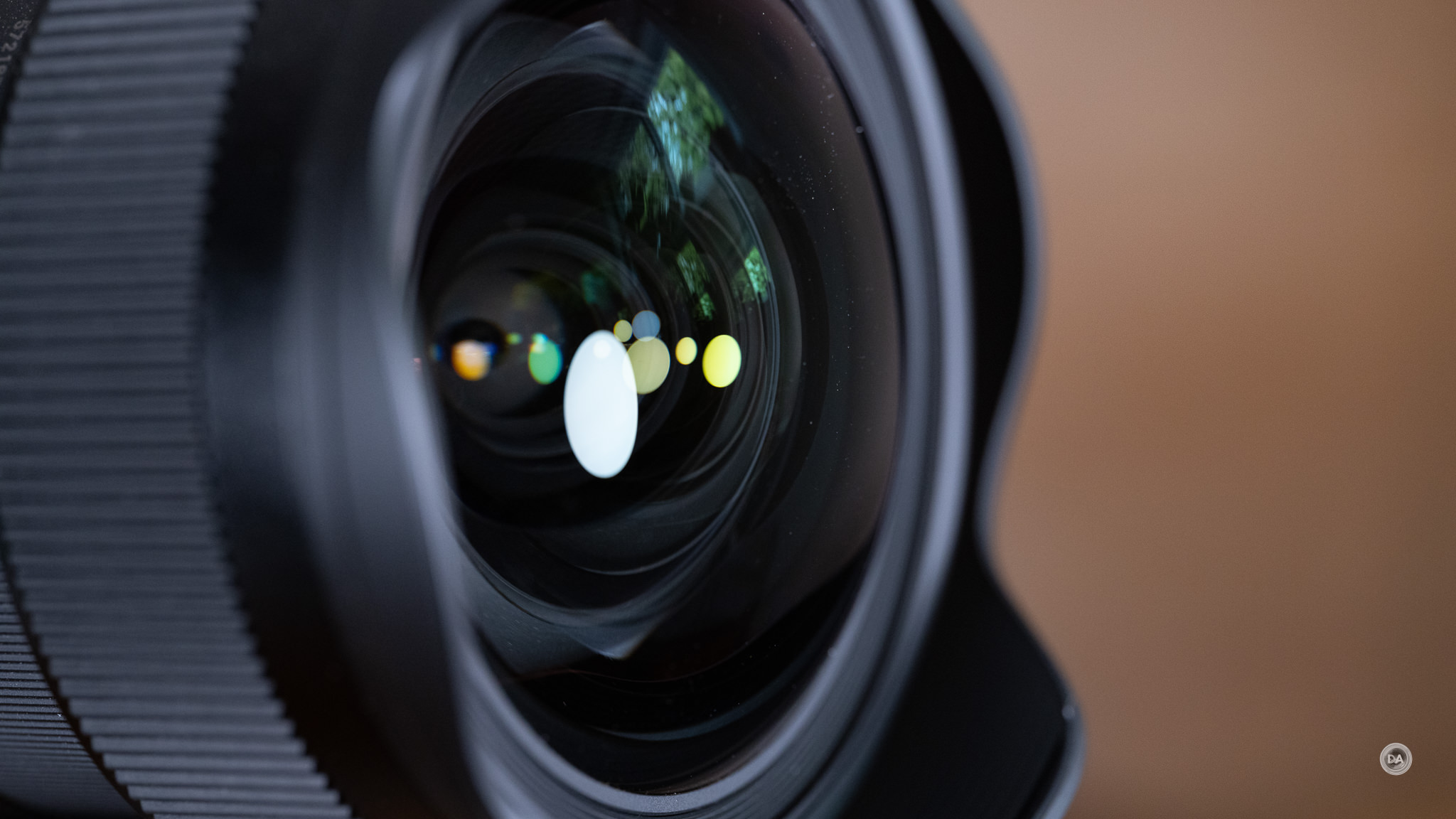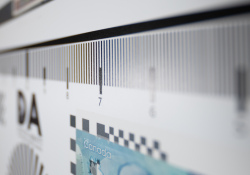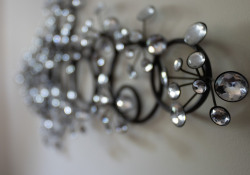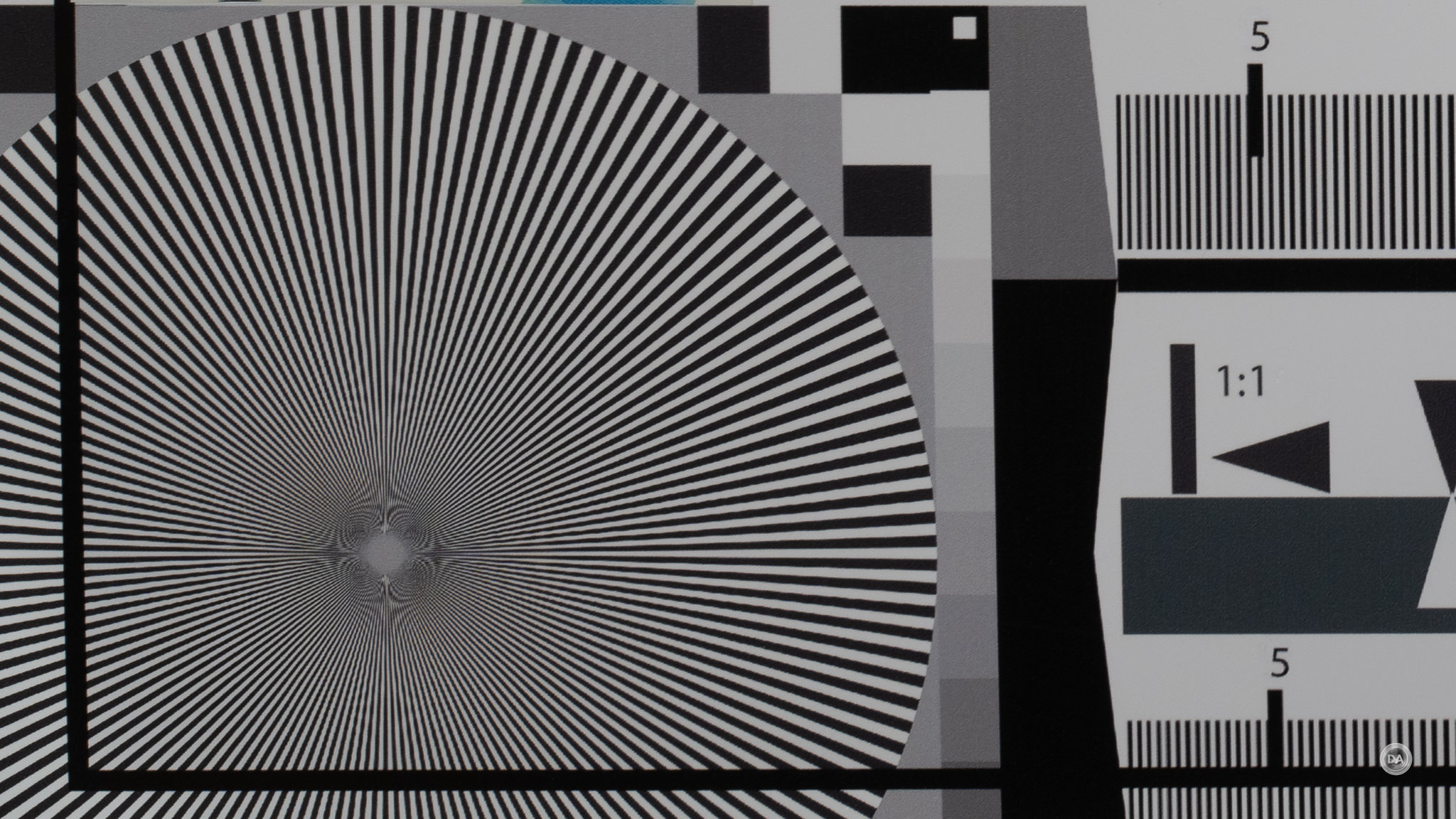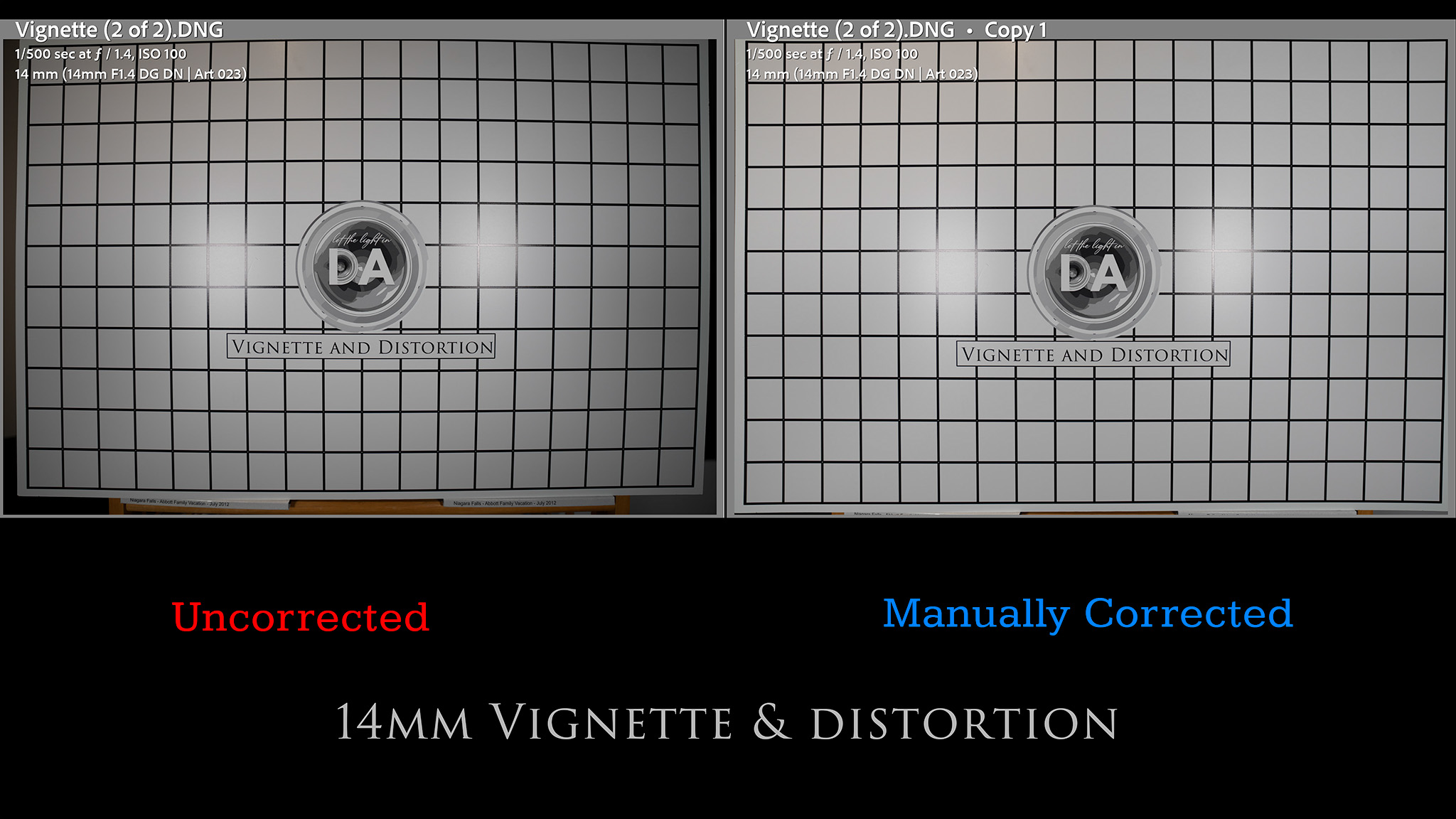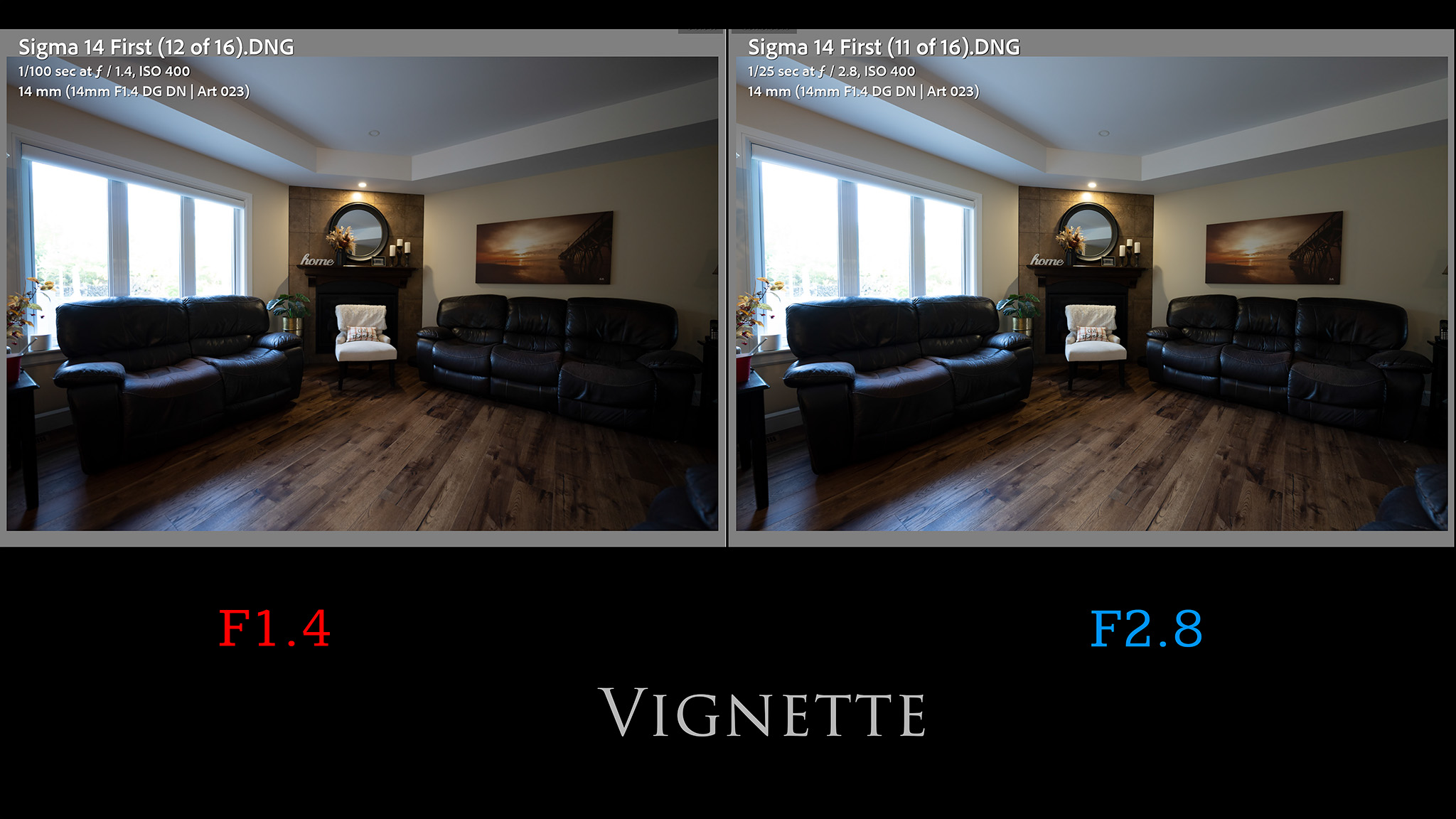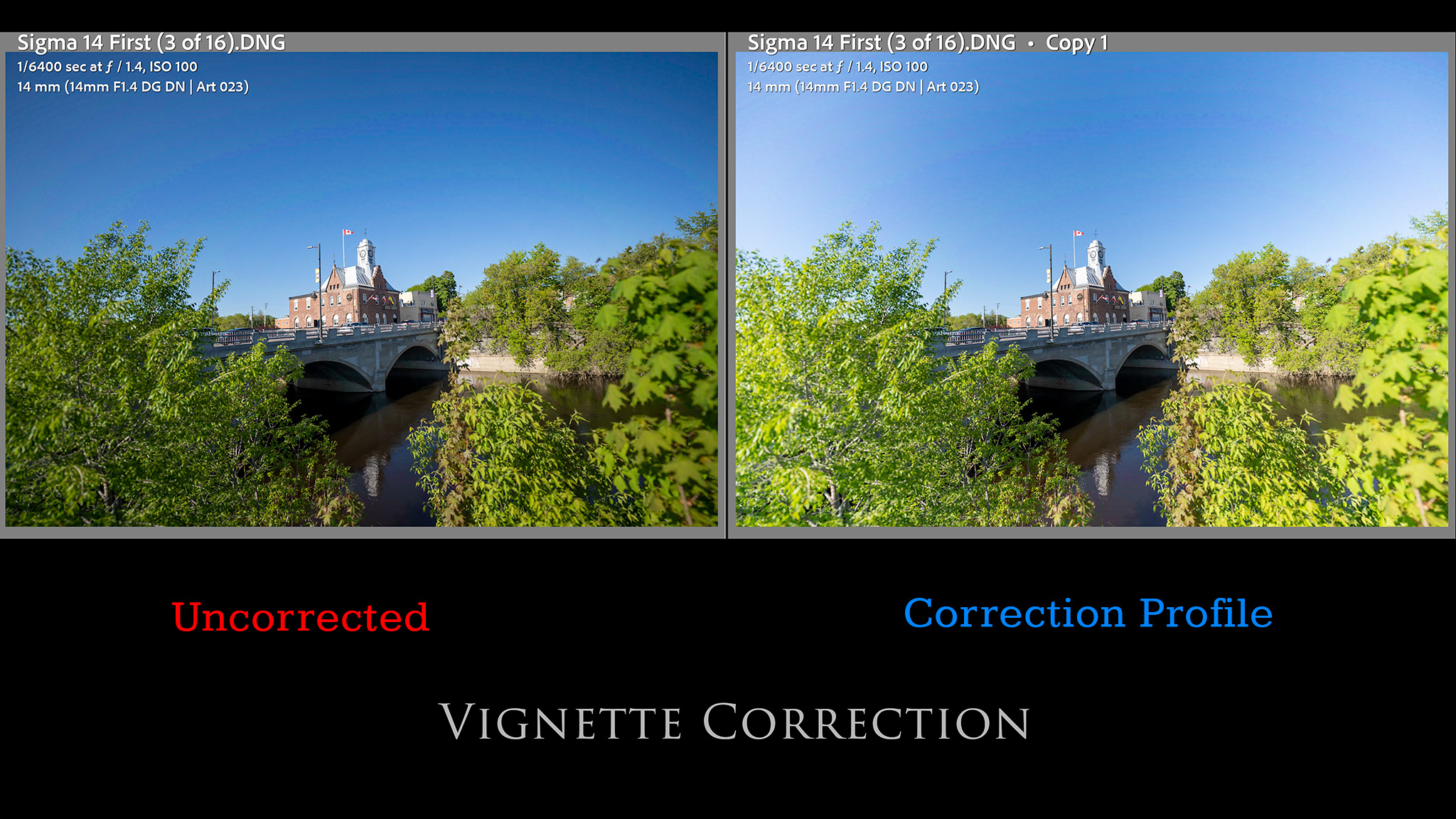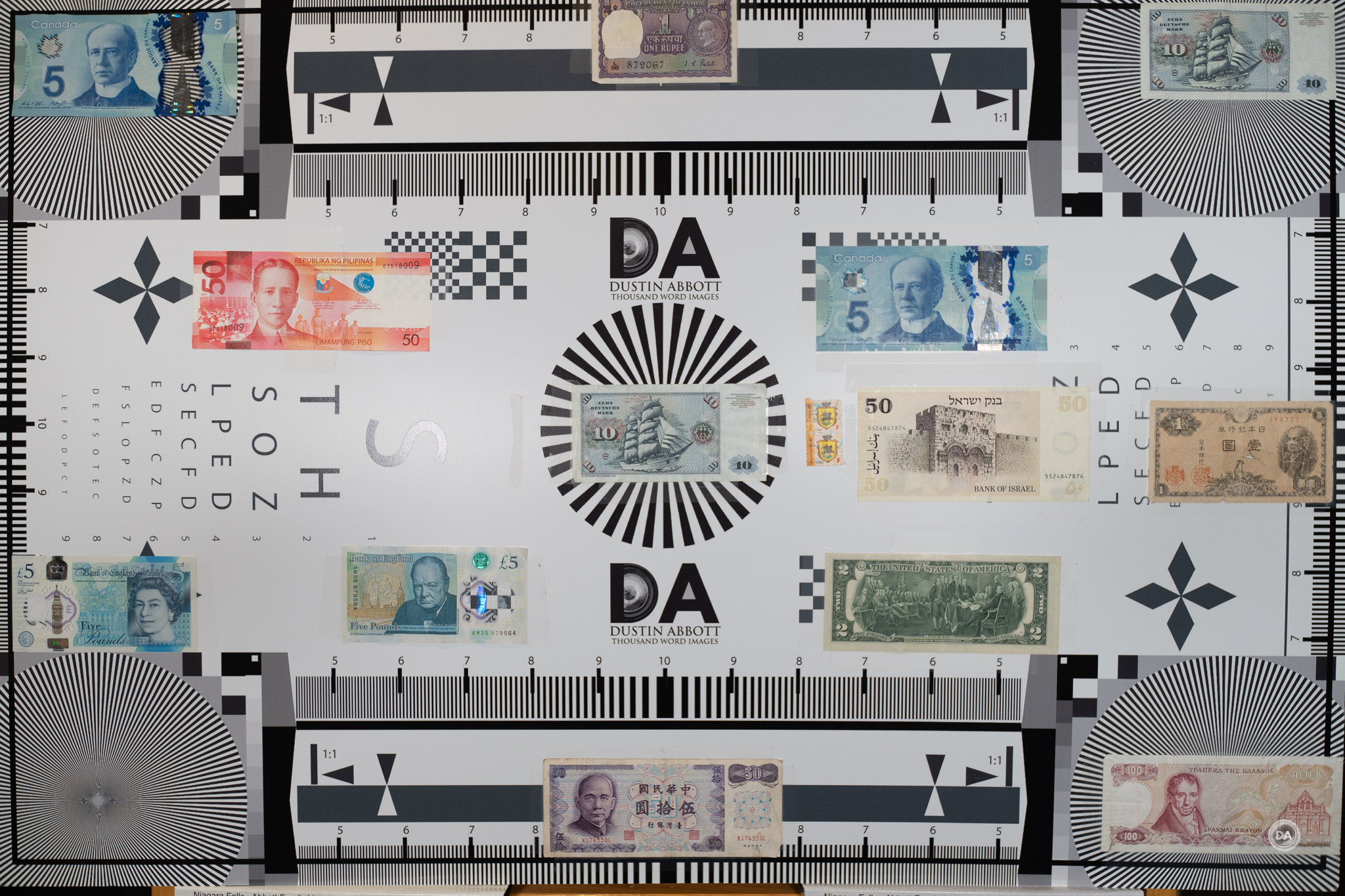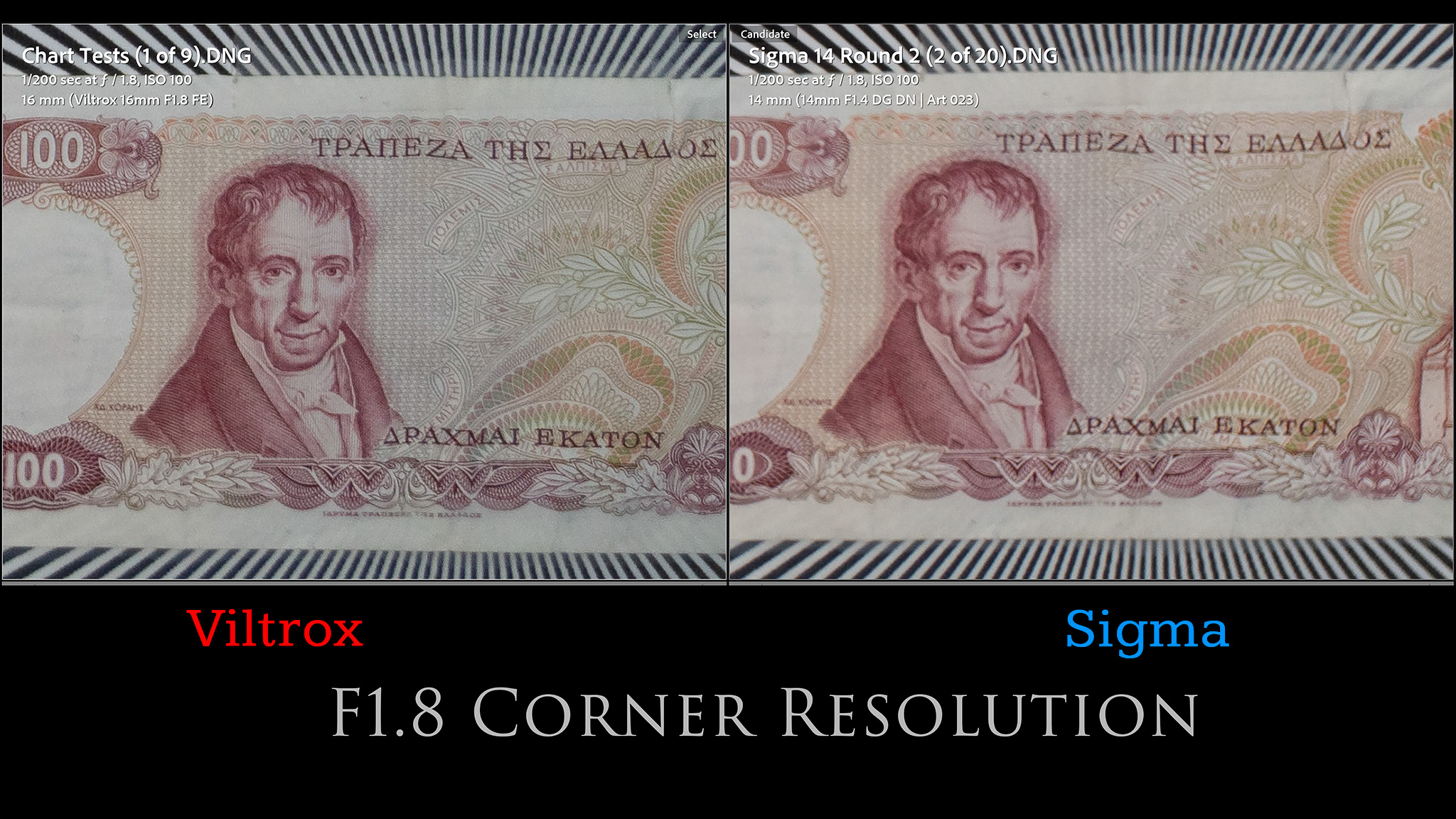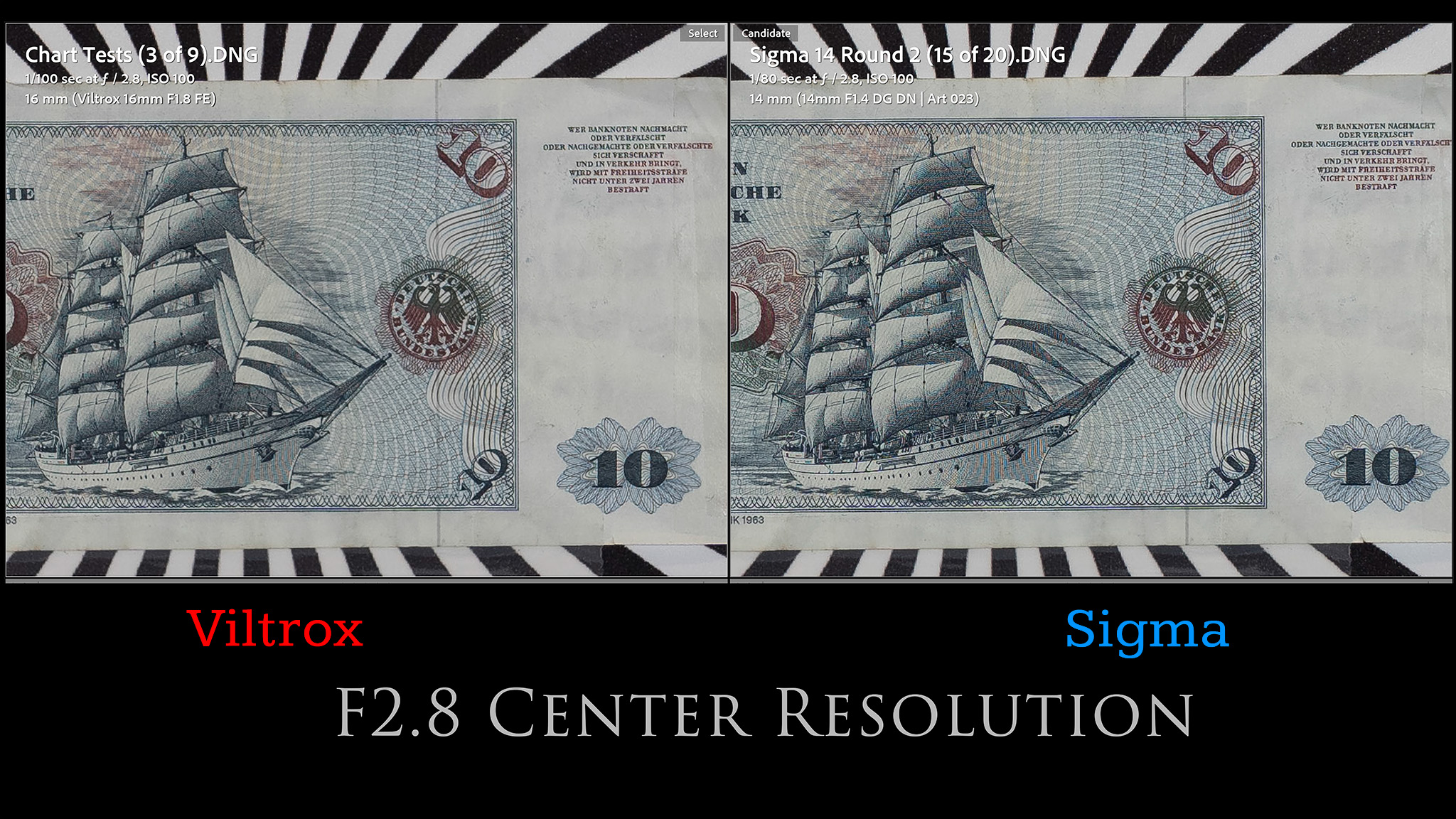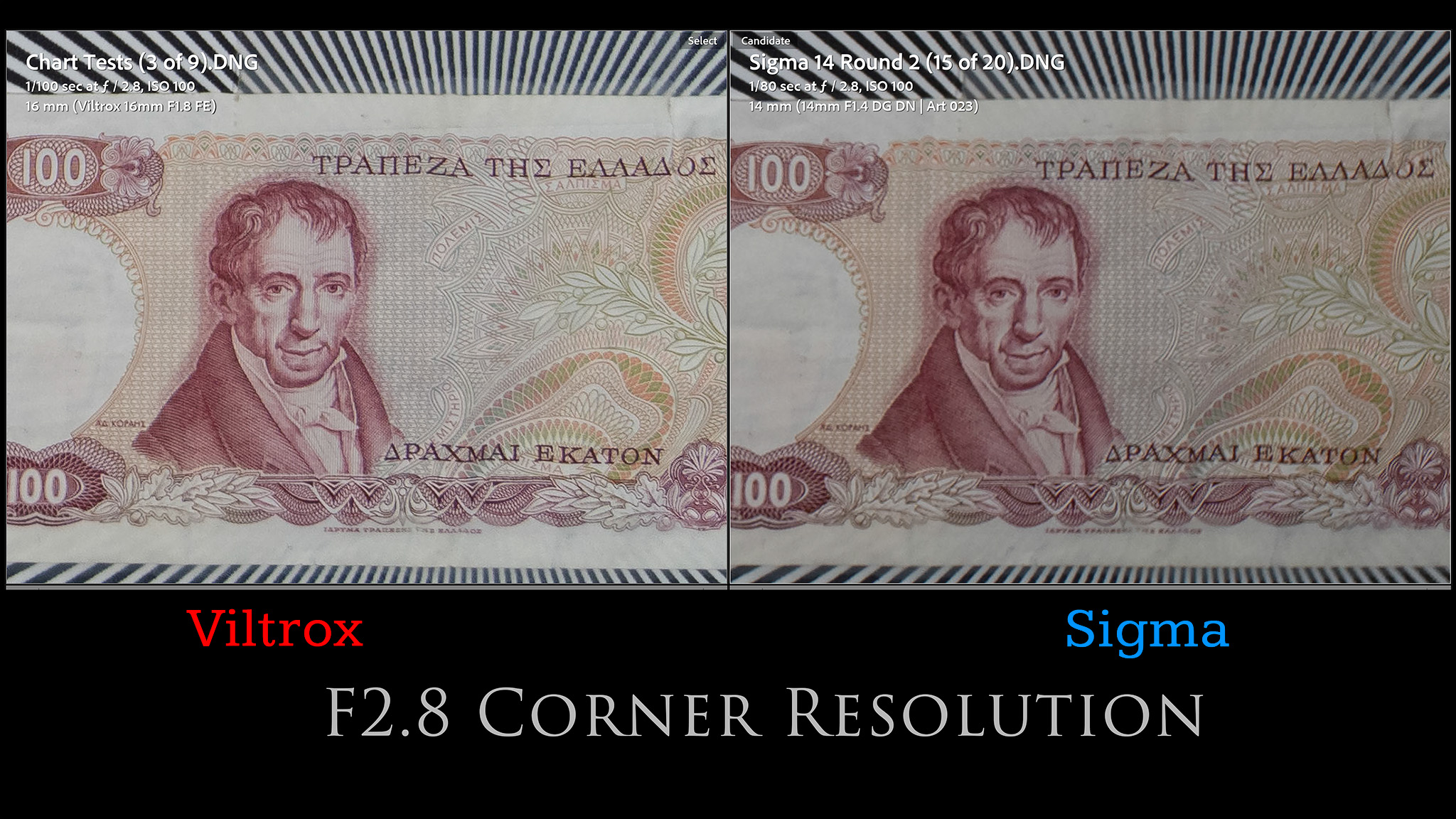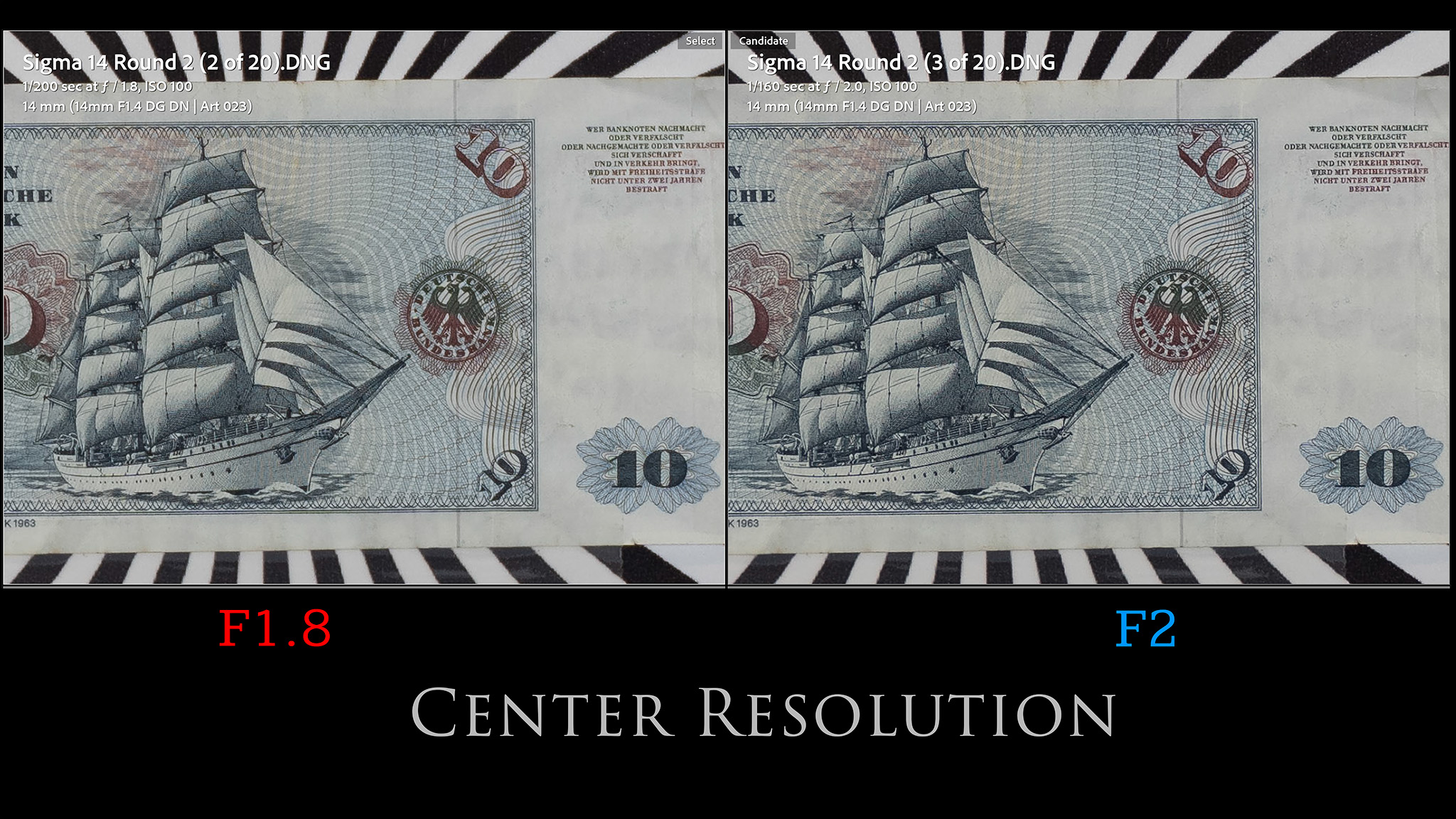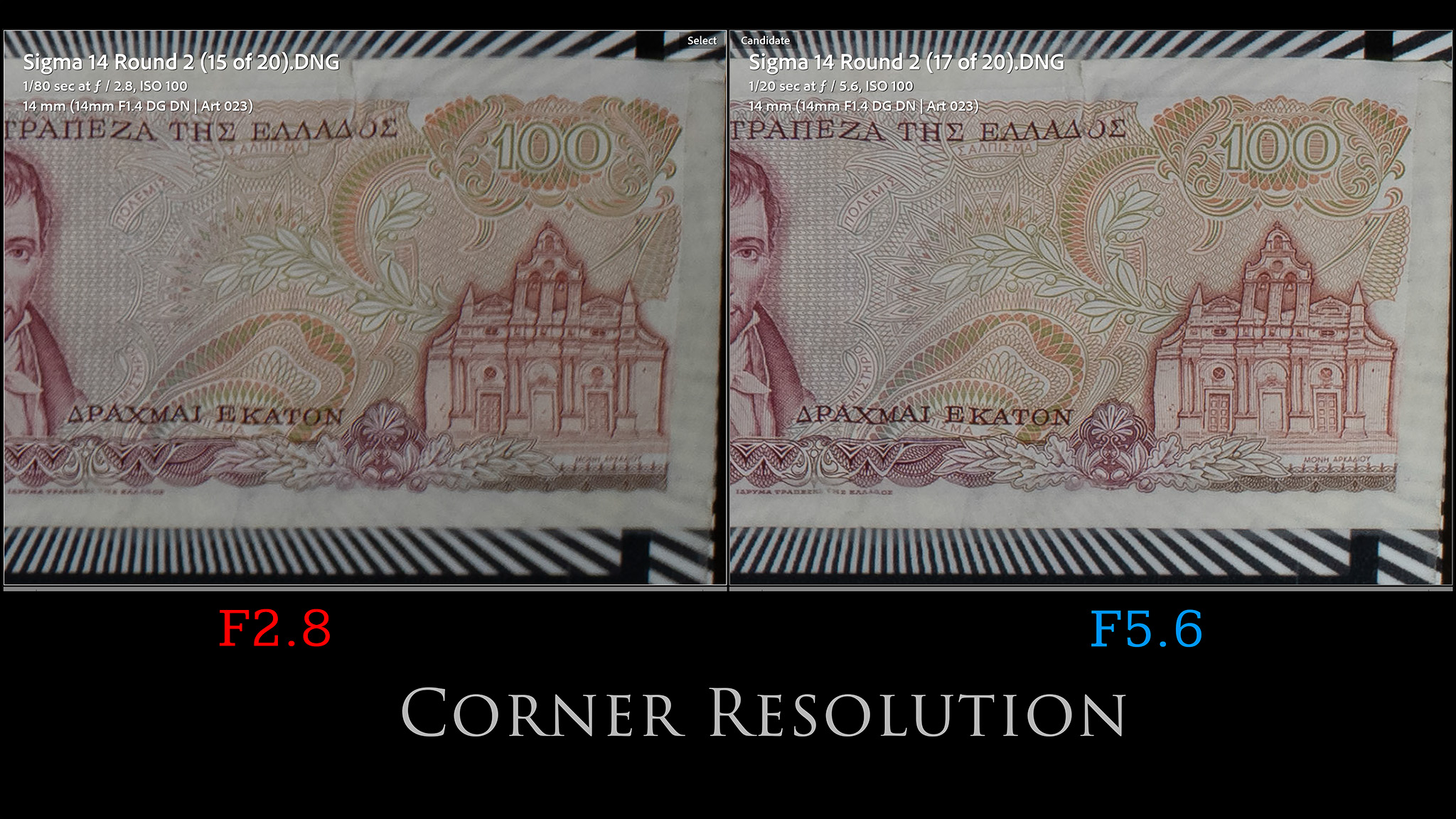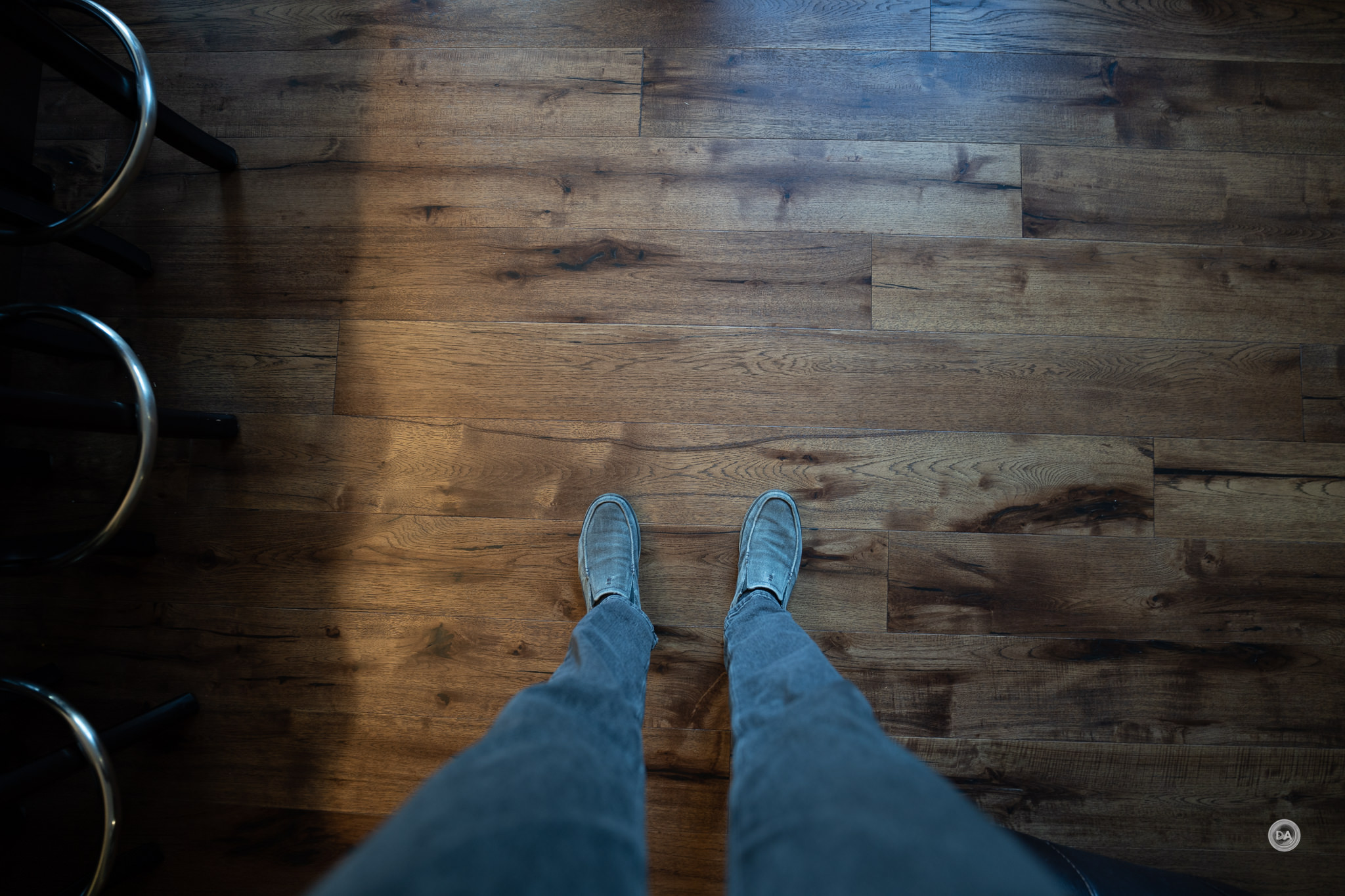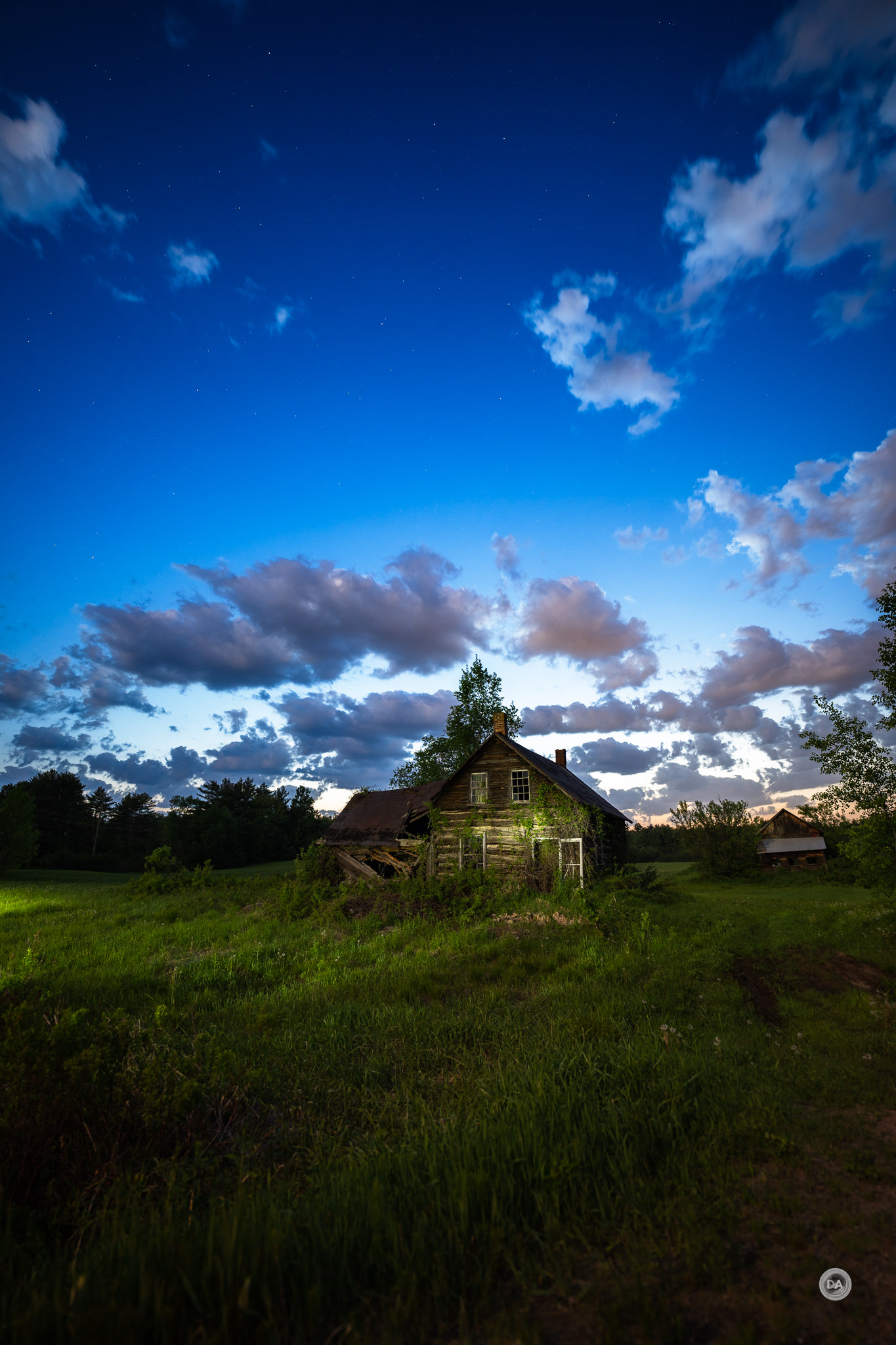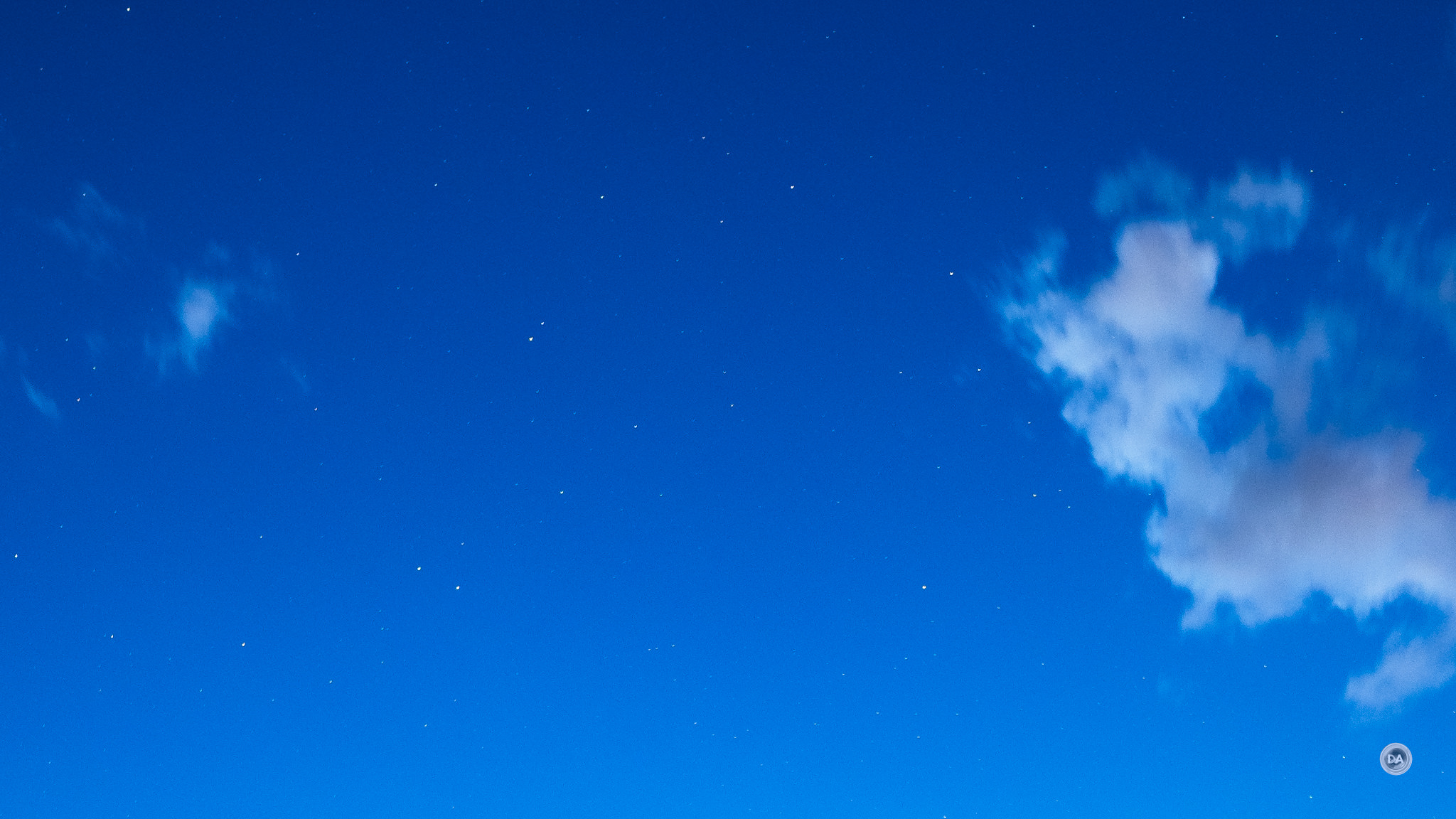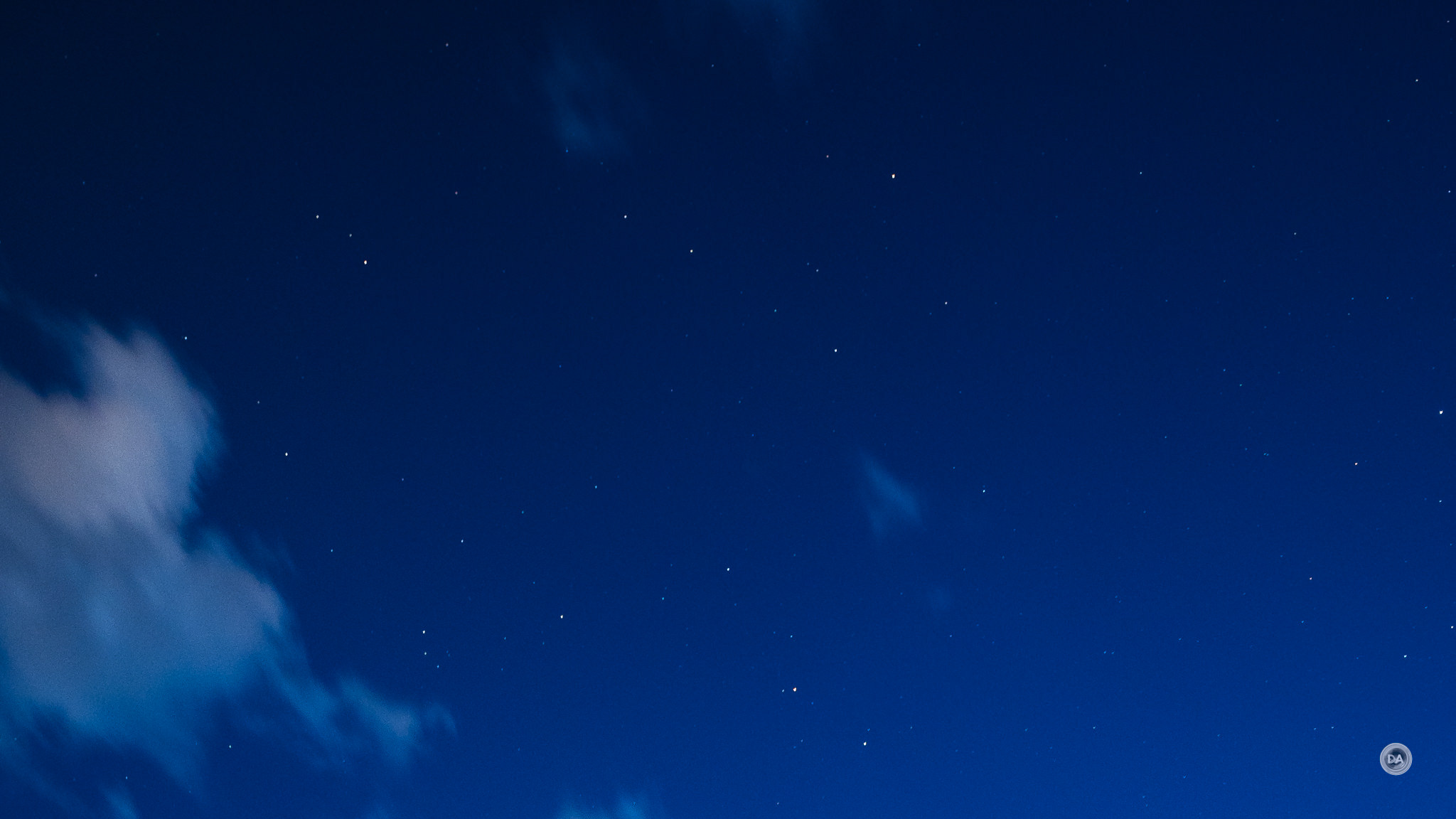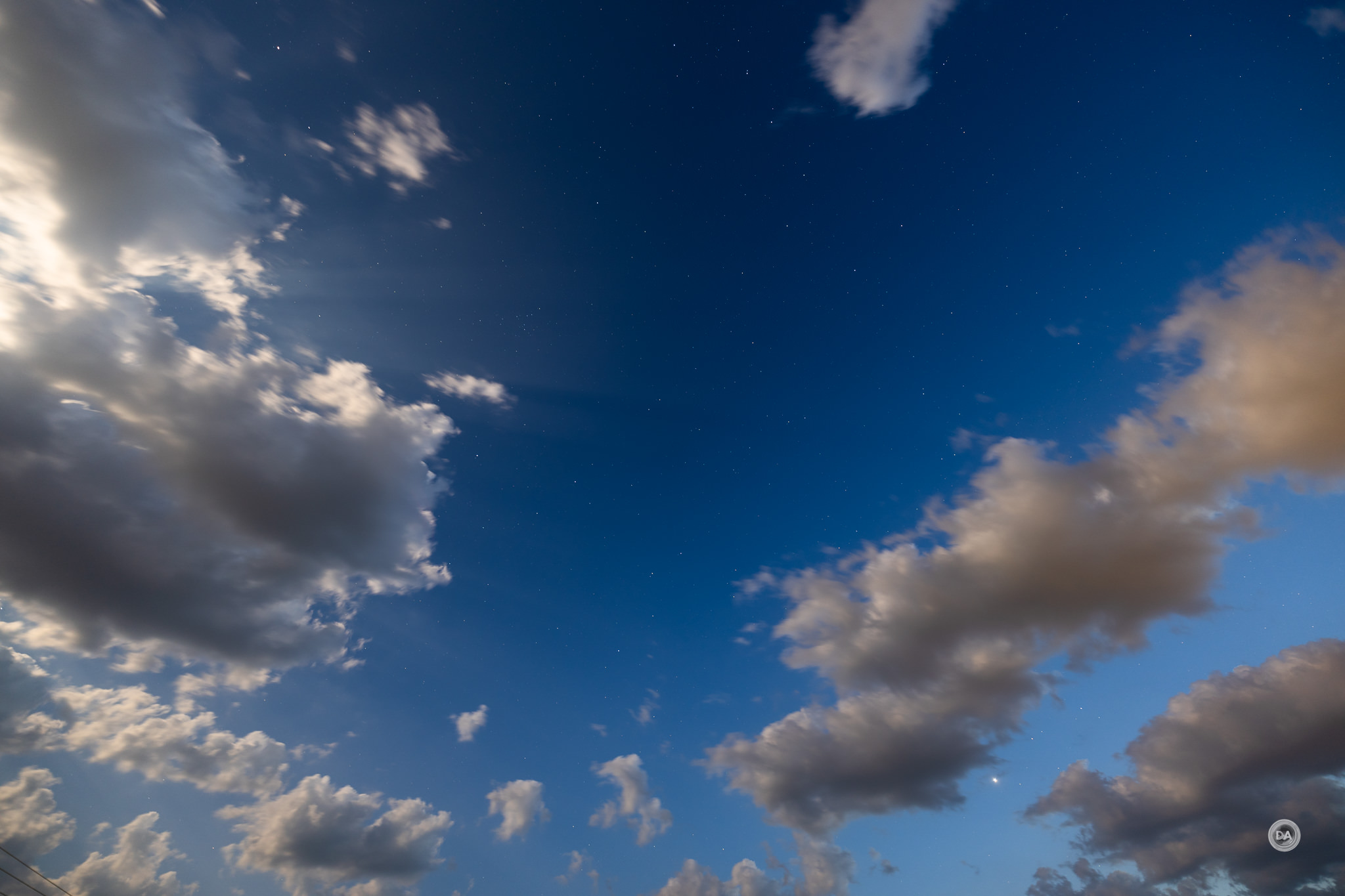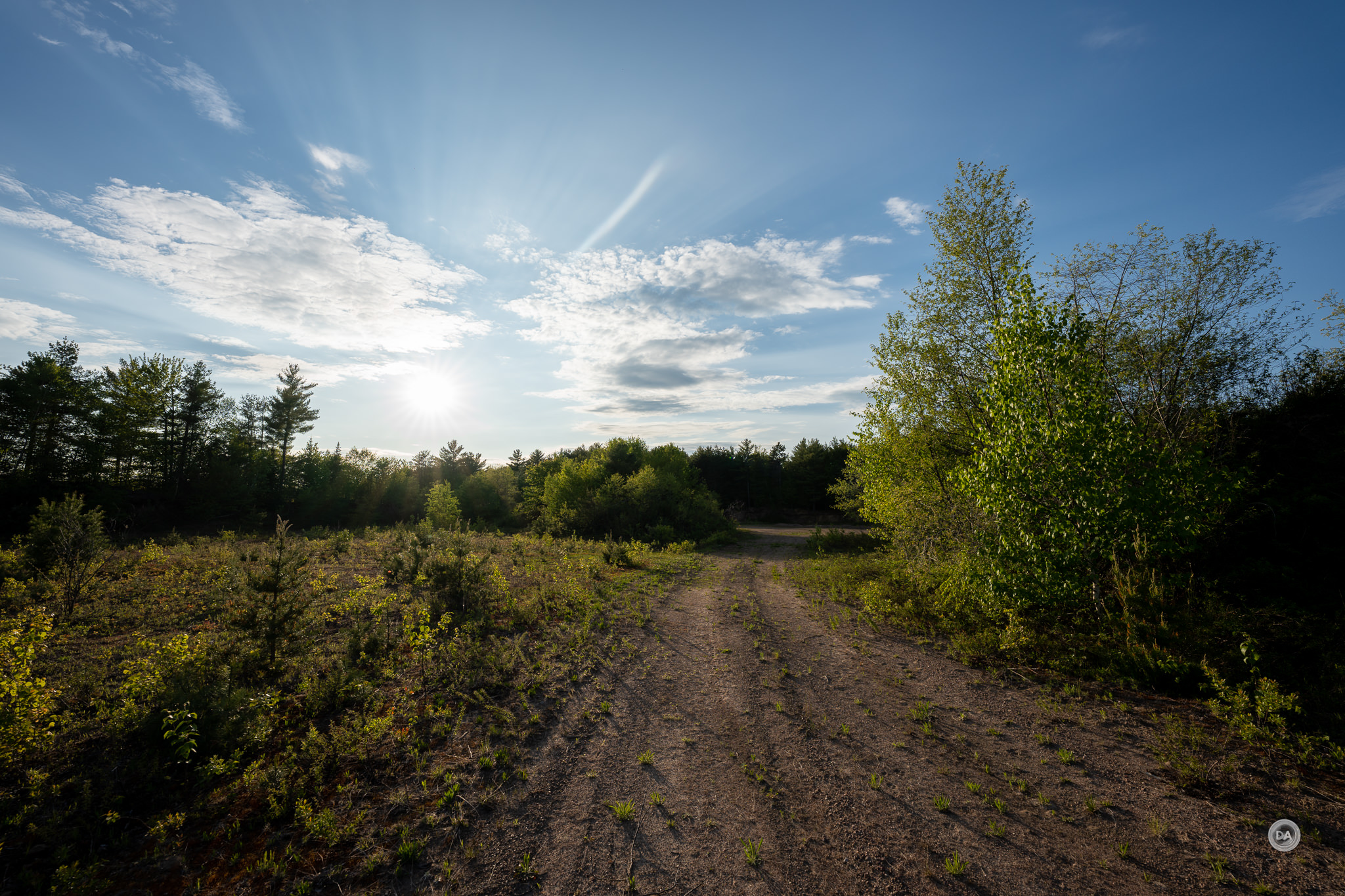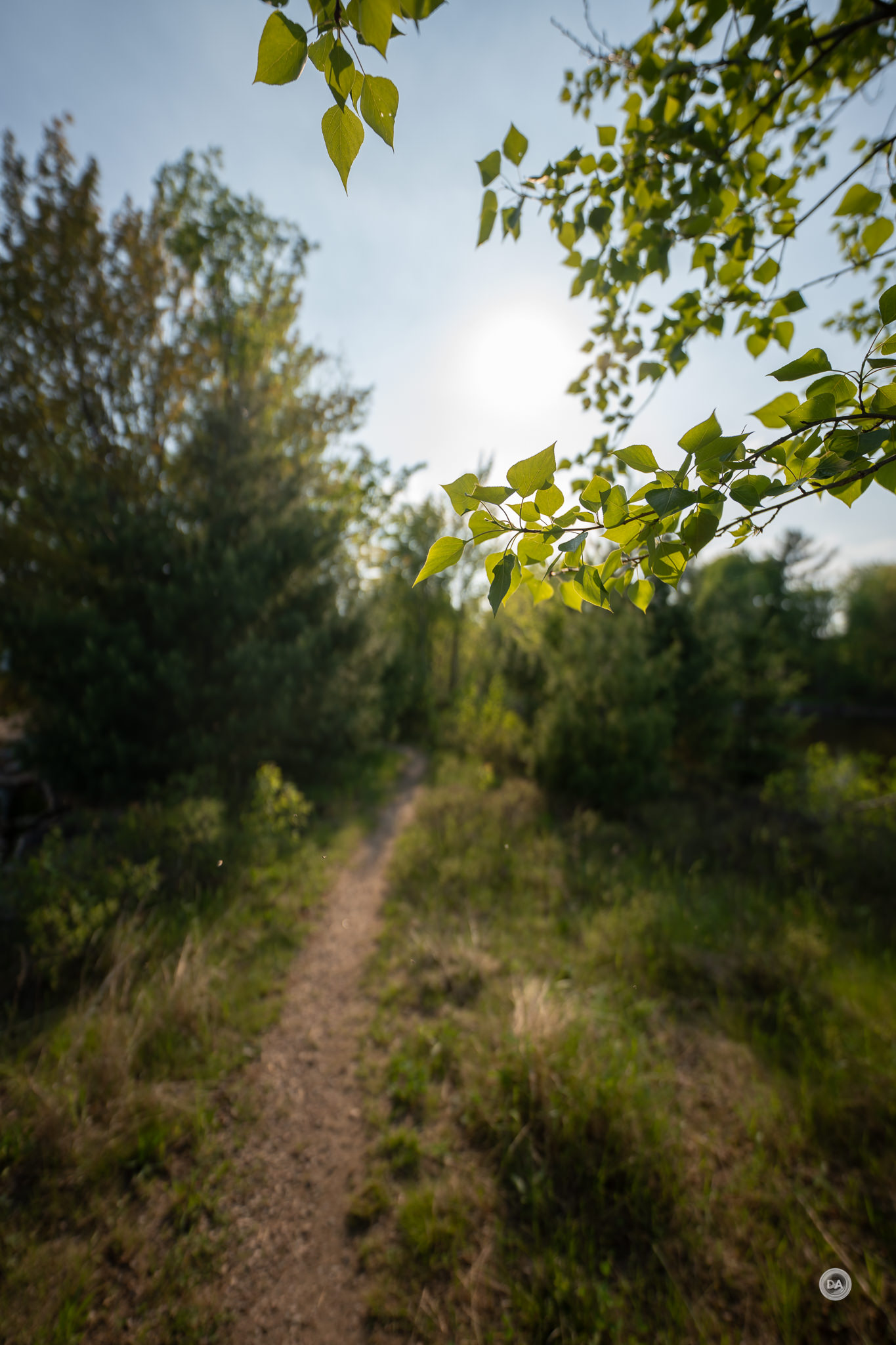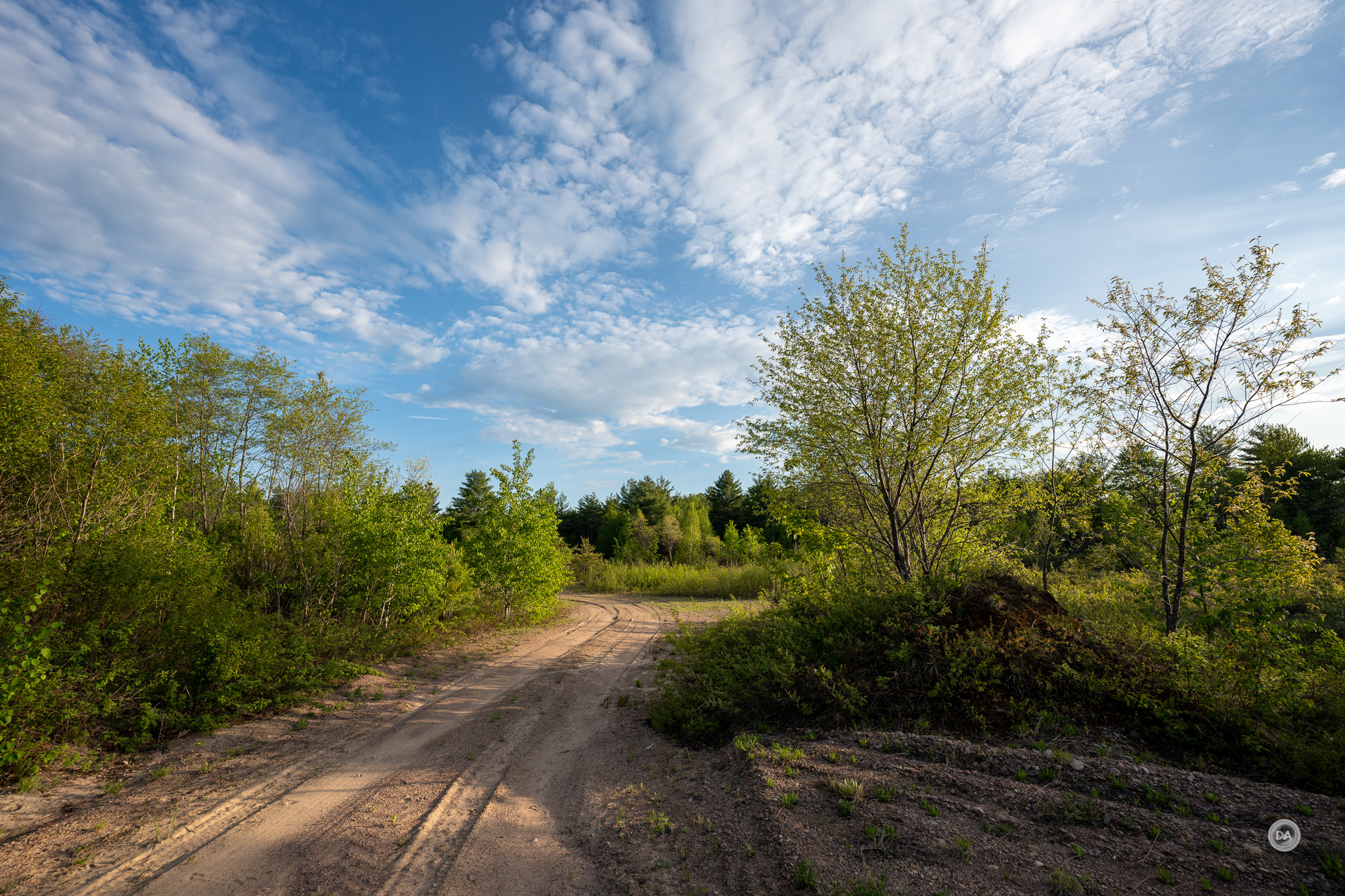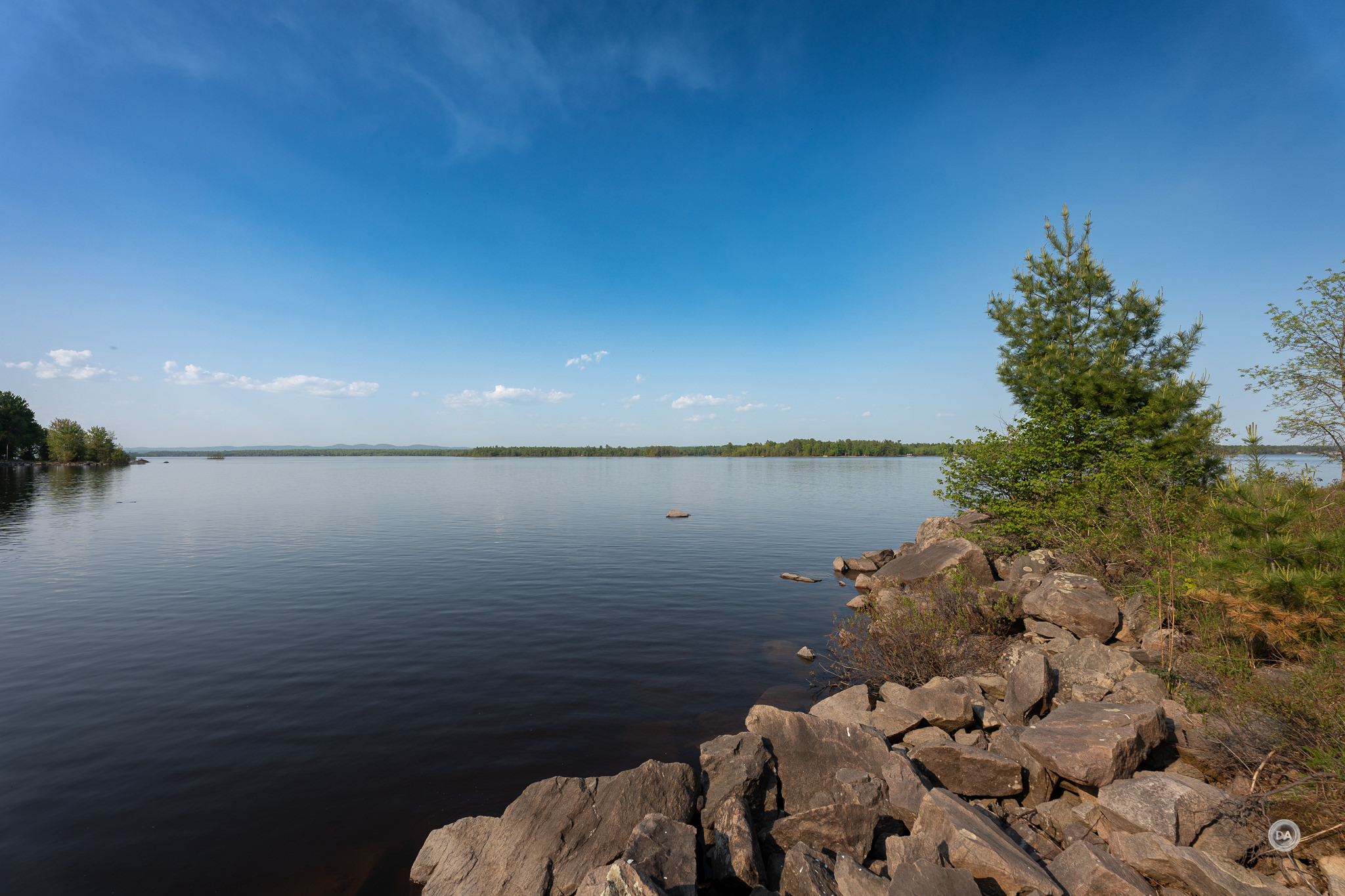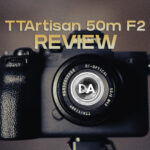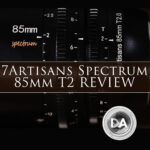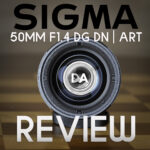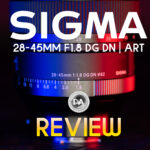Sigma 14mm F1.4 DG DN | ART Review
Sigma has got guts. I’ve repeatedly see them tackle projects that stretch the limits of what’s possible at a certain focal length, and they’ve done that again with their latest project – the Sigma 14mm F1.4 DG DN | ART. This is the largest maximum aperture ever achieved at this focal length for a full frame platform, and Sigma has thrown out certain constraints to make that happen. Some recent Sigma “DN” (designed for mirrorless) lenses have worked at being lighter and more compact than previous Sigma lenses at that focal length, but that wasn’t really an option here. This is a BIG lens (152mm long in Sony E-mount) and it weighs in at 1160g, which is more like the weight of some recent 70-200mm zooms (Sony’s 70-200mm F2.8 GM II weighs 1045g). It’s perhaps the first wide angle lens I’ve seen with a tripod collar, and in many ways it reminds me of another extreme Sigma lens – the 105mm F1.4 ART lens, though that lens was heavier still. Sony’s own approach to this focal length was to emphasize compactness, and the Sony 14mm F1.8 G Master is 52mm shorter and weighs 700g less. But Sigma wasn’t going for small; they were going for high performing, a specialized tool for nighttime photography and astrophotography. And that’s exactly what we have here.
DN is the designation Sigma uses for its purpose designed mirrorless lenses, while DG refers to a lens designed for full frame. Sigma has taken a bifurcated approach to lens design on mirrorless, with smaller size, smaller aperture options in their “i-Series” (which they put under their “Contemporary” brand umbrella) and then more robust, larger aperture, professional grade lenses under their “ART” brand. The 14mm F1.4 DN definitely falls into the latter category, as this is an extreme, professional grade lens that is really designed for those that want something BEYOND what the G Master series is offering at this focal length. This is a lens that delivers powerful images even at F1.4:
The 14mm F1.4 DN is an extremely feature rich lens that is going to give a lot of options to purchasers for how they capture images. I’ve used the lens a lot handheld, but this is also a lens that makes a lot of sense to use off of a tripod. This is clearly not a lens designed for everyone, and it is a bold move for a third party lens maker to position themselves as upscale option over the first party professional series, but that’s what Sigma has done. The 14mm F1.4 DN has a larger maximum aperture, is larger and heavier, more expensive, and higher performing than the Sony 14mm F1.8 GM. That’s a bold move. So does the Sigma 14mm F1.4 DN ART hold up under intense scrutiny? You can judge for yourself by either watching my video review below or reading on to get the full picture.
Follow Me @ YouTube | Patreon | Instagram | Facebook | DA Merchandise | Flickr | 500px
Thanks to Gentec (Sigma’s Canadian Distributor) for sending me a pre-release review loaner of this lens. As always, this is a completely independent review. *The tests and most of the photos that I share as a part of my review cycle have been done with the Sony a7IV along with the Sony Alpha 1 which will serve as my benchmark camera for the foreseeable future (my review here).
Sigma 14mm F1.4 ART Build and Handling
As noted in the intro, the Sigma 14mm F1.4 DN ART is not a small lens. It starts out from the fairly narrow Sony E-mount in ascending sections that widen out near the front to a large 101.4mm (4″) diameter. The lens is extremely long for a wide angle lens at nearly 152mm (6″), and, as noted it tips the scales at 1160g or 40.9oz. These are the Sony E-mount dimensions; the Leica L dimensions are within a millimeter or two. The size is going to be the biggest limiting factor for many potential buyers, but Sigma clearly calculated that the audience for this lens isn’t going to care too much about the size. I definitely get a lot of feedback from people on my YouTube channel that don’t really care about the size of a lens; it’s all about the performance for them. There’s a whole other audience that might consider size one of the single most important factors in their lens buying decisions, with others that fall somewhere in between. This lens is clearly targeted at those who are all about the performance. And, to be fair, Sigma’s previous 14mm F1.8 ART weighed 10g more though it was a hair smaller.
Sigma’s current lens design philosophy is that Sigma ART lenses are going to have everything that a Sony G Master lens would have…and even more. This lens has a wide variety of features that help with video capture, astrophotography, time lapses, long exposures, and more. That starts with a robust approach to aperture control. You have a manual aperture ring that can be controlled with “clicks” (with detents at every 1/3rd stop), you can switch it into A (automatic) mode and control aperture from within the camera, or you can flick a switch and have a declicked aperture for video use. There’s also an aperture ring lock that you can employ that serves to keep you either from the manual aperture section (if you don’t like using an aperture ring) or from inadvertently switching into automatic mode if you prefer using the aperture ring.
That’s a lot of control over how to approach aperture, and its worth noting that all of Sigma’s switches have a nice two-tone look where you can see white if engage in one direction or black if engaged in the opposite direction. The aperture iris itself has a high blade count of 11, which makes for a nicely rounded aperture even stopped down.
There is an AF/MF switch along with a focus hold button (which can be programmed to various functions from within the camera). Both of these are very welcome as they add functionality to the control of the lens.
There is also a new feature here that is really designed with astrophotographers in mind, and that is a lock button for the manual focus ring. This allows you to preset a focus position (like for the stars) and lock it into place. That would allow you to transport the lens on site (in the dark) and know that focus is already in the proper position.
The 14mm F1.4 DN ART also has a new lip built into the front of the lens that is designed to help hold a lens heater in place for those that shoot in cold, moist conditions and want to prevent condensation from forming on the front element. I’ve not personally encountered this issue (or ever used a lens heater), but if you happen to be in the target audience for this feature, I’m sure you’ll be glad for it.
All of this adds up to a lens that is more feature rich than the Sony 14mm F1.8 G Master that it will primarily be compared to.
One of the things sacrificed to achieve such a large aperture at this focal length is the ability to use traditional filters. This design has an integrated lens hood that largely serves to protect the very large curved front element, and there are no traditional lens threads there. Filtering will have to come at the back of the lens, where Sigma has integrated their GP-11 filter holder. It’s a nicer design than many such lenses, however, with a locking lever to hold filters in place. I’ve reviewed some rear filter options for the Sigma 14-24mm F2.8 ART (a great lens), and I tested one that I had left around and can verify that these same filters will fit the 14mm F1.4.
Sigma does provide a template for cutting sheet type filters (also called gel filters), and, in a unique twist, they’ve created storage space for such filters in the lens cap. I’m not sure how practical these filter slots are, however, as the “doors” on the lens hood only open up a crack. This won’t accommodate anything but a sheet filter; definitely nothing with a frame.
Another interesting thing about the lens cap is that while it is the traditional design that slips over the fixed lens hood common to lenses with this design, Sigma has uniquely designed this particular lens cap to where it has a traditional front pinch design. This allows it to actually lock into place and prevents it from ever slipping off inadvertently. The sheer size of everything here makes the cap pretty bulky, however. It weighs in at 90g, which is only 30g less than what Samyang’s 24mm F2.8 AF lens weighs!
Helping to manage the weight and balance for the lens is a fully removable tripod collar. The huge front element of this lens makes it a little front heavy, so Sigma decided to make the TS-141 tripod socket part of their design. The tripod foot itself is very compact, so I do find that it can get in the way of operating a few of the switches as there is little clearance between the tripod foot and the lens barrel. The tripod foot is (thankfully!) Arca compatible, which means that it can be fastened right onto most tripods without having to mess with a quick release plate. There is a tension knob at the side that allows for the lens to be rotated into a vertical position, which will definitely help those whose tripods might struggle to lock a heavier lens/camera combination like this into place with the ball head rotated into a vertical position. The tripod collar can be removed, and Sigma has included a rubber sleeve to slide over the exposure screw points if you want to use the lens without the collar (as I primarily did).
There is a nice (and large!) nylon padded case also included with the lens.
Sigma now employs weather sealing in their better lenses, with a gasket at the rear mount but then also seal points internally as well. That helps inspire confidence in being able to use the lens in more situations.
Minimum focus distance isn’t a huge strength here. Though this is a wider focal length than either their 20mm or 24mm F1.4 lenses, the minimum focus distance is the longest here at 30cm or 11.9″. That means that the maximum magnification is going to be correspondingly lower, and the 0.08x magnification figure is perhaps the lowest I’ve ever seen on a Sigma lens, though, to be fair, the Sony 14mm GM was just slighter better at 0.10x. Here’s what the Sigma MFD looks like when manually focused (which seems to allow you to get closer than 30cm):
This is NOT going to replace a macro lens in your bag.
The build quality is up to Sigma’s recent standards, which means very high quality materials, nice textures, and a brass lens mount. Their overall design for their ART series lenses is very familiar at this point, but it has also aged very well and continues to be on the more elegant design philosophies amongst modern lenses. Sigma takes pride that their lenses continue to all be manufactured in Japan.
All in all, the build quality and feature list of the Sigma 14mm F1.4 DN ART top notch. It is well built and feature rich, and the only things that will probably give pause to potential buyers is the size and weight along with the inability to use traditional screw on filters, though, to be fair, that isn’t an option on the Sony 14mm F1.8 GM, either.
Autofocus Performance
Sigma pioneered their new HLA (High-response Linear Actuator) focus motor this year, and the 14mm F1.4 DN is the third lens to be equipped with it. It is a definite improvement over the stepping motors Sigma has used in the past on their mirrorless lenses. Here’s how Sigma describes the focus system, “A linear motor is a linear actuator that controls electromagnetic forces and can be driven freely, enabling high-speed AF. It can move the heavy focus group while ensuring the lens remains quiet, but the weight is relatively heavier.” That final phrase doesn’t quite flow in English, but essentially they are making the distinction that while typical stepping motors are smaller and lighter, the linear focus motor here is more powerful and has the necessary power for rapid focus changes even with the heavy glass elements in a large aperture lens like this. And you can definitely feel the speed, as there is little hesitation when making focus changes and instead focus is essentially where you need it be near instantaneously.
Focus is basically instantaneous in practical, real world use, and I felt a great deal of confidence while out hiking or shooting in that I would be able to quickly get the focus result I wanted on either my Sony a7IV or Alpha 1. And yes, both of these cameras have similarly excellent focus systems, but I feel confident that people will be very happy with autofocus on most of the Sony E-mount or Leica L-mount cameras on the market today.
Image capture was pretty much effortless whether I was shooting closer, large aperture images like this:
…or shooting landscape images near infinity.
Autofocus just worked, period.
Video focus pulls are snappy and confident with no sound, drama, or pulsing. On the negative side there was more focus breathing that I expected from such a wide angle – much more than, say, the recent Viltrox 16mm F1.8. While capturing video the two new lenses will also be compatible with AF assist on Sony FE – though that’s on compatible cameras that have this function (my a7IV does, fortunately). It’s an interesting feature that allows you to manually focus during video capture on a certain object or subject, but the lens will continue to autofocus on that object even after you stop doing the manual adjustment. This is a unique way to set focus on something and then allow autofocus to do the heavy lifting after that.
I saw good results with my hand test, with autofocus snapping back to my eye after I blocked the lens with my hand.
The 14mm F1.4 DN is large and heavy for gimbal work, but the autofocus will assure that if you do use it, you’ll get excellent results.
All in all, autofocus is good enough that you will instantly forget about it and instead be able to focus on the images or video you are creating.
Sigma 14mm F1.4 DN ART Image Quality
The original Sigma 14mm F1.8 ART was a strong lens optically, but the new F1.4 lenses manages to be sharper basically everywhere in the frame even at F1.4. The biggest difference is in the zone about two thirds out from center, where the 14mm F1.8 lens had a significant drop. The new F1.4 lens is basically 20 points higher (out of 100) there, and that means you’ll get sharper results out towards the edges of the frame.
High performance is pretty much a must for this lens, however, as Sigma has gone all in on performance without compromising for the sake of more compact size. That, combined with a fairly high price, means that I am more critical in my evaluations of performance, as one cannot blame any shortcomings on compromises made to reduce size or price.
Longitudinal chromatic aberrations (LoCA) typically show up as purple/magenta fringing before the plane of focus and blue/green fringing beyond the plane of focus due to colors not being perfectly focused together. They typically diminish as the lens is stopped down to smaller apertures. A wide angle lens like this has less opportunity for the kind of shallow depth of field images where LoCA is most likely to show up, but the F1.4 aperture does make shallow DOF images possible. I saw some very mild fringing before and after the plane of focus, but nothing significant. The second shot shows that there is essentially no fringing in the bokeh circles.
Lateral chromatic aberrations (LaCA) show up as fringing on either side of contrast areas (like tree trunks, for example) along the edges of the frame. Unlike LoCA, they do not improve when stopping the aperture down, but are much easier to correct for (typically a one click “remove chromatic aberrations” box in editing software). These are more common for wide angle lenses than LoCA, but I didn’t much of anything on either my test charts or real world results. These are very well controlled.
Next we will take a look at distortion and vignette.
You can see that there is some barrel distortion that proved difficult to manually correct. If I corrected the sides (using a +9), the distortion was not fully corrected, but going further would create some pincushion distortion in other areas. The correction profile in camera or in software will do a little better job of correcting it. That’s still a fairly good number for such a wide angle of view, however. Vignette is moderately strong, requiring a +73 for correction (around three stops). I’ve definitely seen worse, though with such a large front element (and the inability to use traditional filters), I’m a little less tolerant of heavy vignette as this is on the supposed trade-offs for the compromise of having this type of lens design.
That vignette will give wide aperture images a certain “look” which will work on some images but will also sometimes make the center of the image look a bit overexposed as the camera meters for the whole scene. Scenes where corners should be light (like with snow or certain sky scenes) will definitely want some correction. Here’s the difference between F1.4 and F2.8 – see how much darker the F1.4 version looks due to the vignette?
Sigma provided me an early correction profile to use during my review (I was reviewing a pre-release lens), but I actually found the profile overaggressive in the correction of vignette. It actually made the corners look artificially light, and I found that in Lightroom I needed to modify the profile and bring it down to about 58% for vignette correction to get an even illumination.
I suspect that the profile will get fine-tuned a bit more for the standard release. Sigma lenses receive generous in-camera support, so JPEGs and video will be corrected in camera, and only RAW images (like those I’ve shown) will require using a correction profile in post.
So how about sharpness? We’ll do our formal test on the full frame (35mm) image circle that the lens is designed for, using the 50MP Sony Alpha 1 for this series of tests. Here’s a look at the test chart:
And here are the F1.4 crops at nearly 200% magnification, taken from the center, then mid-frame, and then extreme lower right corner:
The center looks amazing, but frankly, I’m a little underwhelmed by the mid-frame and corner performances. If I choose a compromise point between the mid-frame and corner and compare at F1.8 to the recent Viltrox AF 16mm F1.8, I will easily choose the Viltrox.
I ran my tests multiple times on two different lenses, but got roughly the same results. Now to be fair, the Viltrox is surprisingly sharp; it bested the Sony 14mm F1.8 GM results that I had from my review of that lens. Comparison with the GM showed some give and take between the Sony and Sigma:
In the center of the frame the Viltrox and the Sigma are neck and neck at F1.8. If I compare them at F2.8, the Sigma is sharper in the center while the Viltrox is a clear winner in the corners.
But the Viltrox is smaller, lighter, and much cheaper, so my expectations of it were lower (and exceeded) while my expectations of the Sigma are higher, leaving me a little underwhelmed.
Real world results were more forgiving, and I see good detail in this F1.4 image with crops from the center and edge of the frame.
This wide open shot of Nala hits the sweet spot for performance, and it is razor sharp even at F1.4:
At F1.8 there is a little more contrast available, but there’s not a significant difference from F1.4. There’s a more significant difference between F1.8 and F2:
By F2.8 the center has achieved maximum sharpness (as we saw in the Viltrox comparison above), but the corners aren’t pin sharp until F5.6. You can see a significant difference between F2.8 and F5.6 there:
At landscape apertures the very wide angle of view (114.2°) combined with a smaller aperture like F5.6 means that it is very easy to have great detail everywhere in an image, from front to back.
And it is a very wide focal length. If I held the camera out and looked down towards my feet, they looked very, very far away!
You can see that there is a significant difference in what fits in the frame if I compare the recent Viltrox 16mm vs this Sigma 14mm:
But let’s shift to focus on the main event for this lens: how it performs at night! Two caveats: the first is that we are approaching the summer equinox, so it doesn’t very dark here in the north. I shot the images I’ll share at 10:30 PM, and it still looks fairly light as you’ll see, though this is helped by the fact that an F1.4 wide angle lens like this really sucks in the light. The second caveat is that I’ve been unable to shoot on a second occasion because massive forest fires in our area have covered the sky in smoke at all hours, making sunny days overcast and otherwise clear nights star free. Not a great combination for astrophotography work, but fortunately I did get some killer images despite the challenges.
If we take a closer look, we will find that Sigma has worked very hard with this lens to reduce sagittal coma flare, resulting in very clean star points even out to the edge of the frame.
What’s amazing is that I shot that image at ISO 160 and had only an 8 second exposure. This lens really sucks in the light at night! I shot this second image at ISO 100 and rotated to get a little of the moon rays through the clouds and a longer 15 second exposure. The lens gathered so much light that it looks like sunrise!
The Sigma 14mm F1.4 DN really succeeds in its primary purpose, which is to give photographers a lot of options at night for how they want to approach a scene without worrying about many of the typical flaws that impact wide angle lenses in that setting. Here’s a few other images provided by Sigma taken by photographer Jack Fusco that show what the lens can do in more ideal conditions.
A few other image quality observations. The 14mm F1.4 DN has a very shallow integrated lens hood, and it does little to prevent lens flare. The lens has little issue in direct sun at either large of small apertures, and the resulting sunburst from the 11 blades of the aperture is interesting.
Here’s another look first at F1.4 and then at F11:
But there’s another scenario where the lens struggles. I had several shots where the sun was off to the side where rays caught that big curved front element and did a weird light blob on that side of the frame.
Just be careful with your composition, however, and you can get amazing images even if the sun is in the frame.
Bokeh quality is really not bad for a wide angle lens. You can definitely get some subject isolation if you are close, and I feel like there is a pretty good 3-D quality to images.
Sigma typically does a great job with color, and there’s no exception here. I found color saturation very nice and images as a whole looked great.
Designing a high performing 14mm lens is hard. Designing one with a record setting maximum aperture is much harder. In general, however, I think Sigma has pulled it off. Images have a lot of pop, good color, great detail, and few optical flaws. It’s not quite as sharp in the edges as I expected at large apertures (the 20mm F1.4 DN ART spoiled me!), but that’s a reminder of how hard doing a high performing 14mm lens really is. If you would like to see more images, check out my image gallery here.
Conclusion
Sigma has spent the last decade pushing the envelope of what’s possible at certain focal lengths, and they’ve done it again here. The Sigma 14mm F1.4 DG DN | ART is an astrophotographer’s dream lens. Wide angle of view, huge maximum aperture, low coma, and great sharpness…not to mention a number of features specifically designed to help get great nighttime images.
We’ve got all of Sigma’s latest pro features, from the high end HLA focus motor to advanced weather sealing to a variety of physical controls. But unlike their recent 20mm F1.4 DN ART, Sigma wasn’t able to preserve the ability to use front filters…and we also don’t have quite the same level of performance near the edges of the frame at large apertures.
A high end tool like this doesn’t come cheap, and this becomes one of Sigma’s more expensive lenses at $1599 USD or $2199 CDN. This is not a budget alternative to the Sony 14mm F1.8 G Master; it is a stylistic alternative, a specialized tool. It’s too big and too expensive to be a wide angle option for everyone, but Sigma has plenty of options to choose from if you want smaller, lighter, and cheaper. But if you want the ultimate flexibility for shooting astrophotography, the new Sigma 14mm F1.4 DN will be the lens that you’ve long been waiting for.
Pros:
- World’s first F1.4 lens at 14mm
- Very feature rich lens
- Very flexible approach to controlling aperture
- Rear filter holder
- Excellent astrophotography features
- HLA focus motor is fast and quiet
- Very strong coma performance
- Gathers more light than any such wide angle I’ve seen
- Mostly good flare resistance
- Low aberrations
- Extremely sharp at smaller apertures
Cons:
- No front filters
- Large, heavy, and expensive
- Not as sharp on the edges as Sigma’s recent wide angle lenses at large apertures
- Heavy vignette
Purchase the Sigma 14mm F1.4 DN ART @ B&H Photo | Adorama | Amazon | Camera Canada | Amazon Canada | Amazon UK | Amazon Germany
Purchase the Sigma 20mm F1.4 DN ART @ B&H Photo | Amazon | Camera Canada | Amazon Canada | Amazon UK | Amazon Germany
Purchase the Sigma 24mm F1.4 DN ART @ B&H Photo | Amazon | Camera Canada | Amazon Canada | Amazon UK | Amazon Germany
Purchase the Sony a7IV @ B&H Photo | Amazon | Camera Canada | Amazon Canada | Amazon UK | Amazon Germany
Purchase the Sony Alpha 1 @ Camera Canada | B&H Photo | Amazon | Amazon Canada | Amazon UK | Amazon Germany | Ebay
Purchase a Sony a9M2 @ B&H Photo | Amazon | Camera Canada | Amazon Canada | Amazon UK | Amazon Germany | Ebay
Want to support this channel? Use these affiliate links to shop at: B&H Photo | Amazon | Adorama | Camera Canada | Amazon Canada | Amazon UK | Ebay | Make a donation via Paypal
Buy DA Merchandise https://bit.ly/TWIMerch
Keywords: Sigma 14mm F1.4, Sigma 14mm F1.4 DN, ART, DN, DG, Sigma 14mm F1.4 DG DN ART, Sigma 14mm F1.4 DN Review, 14mm F1.4, 20mm DN, Full Frame, Review, Sony Alpha 1, Sony a7IV, Leica, Review, Hands On, Dustin Abbott, Real World, Comparison, Sharpness, Bokeh, Flare Resistance, Autofocus, Image Quality, Sample Images, Video, Photography, Sony a9, Sony a7IV, Sony Alpha 1, Sony A1, let the light in, #letthelightin, DA

